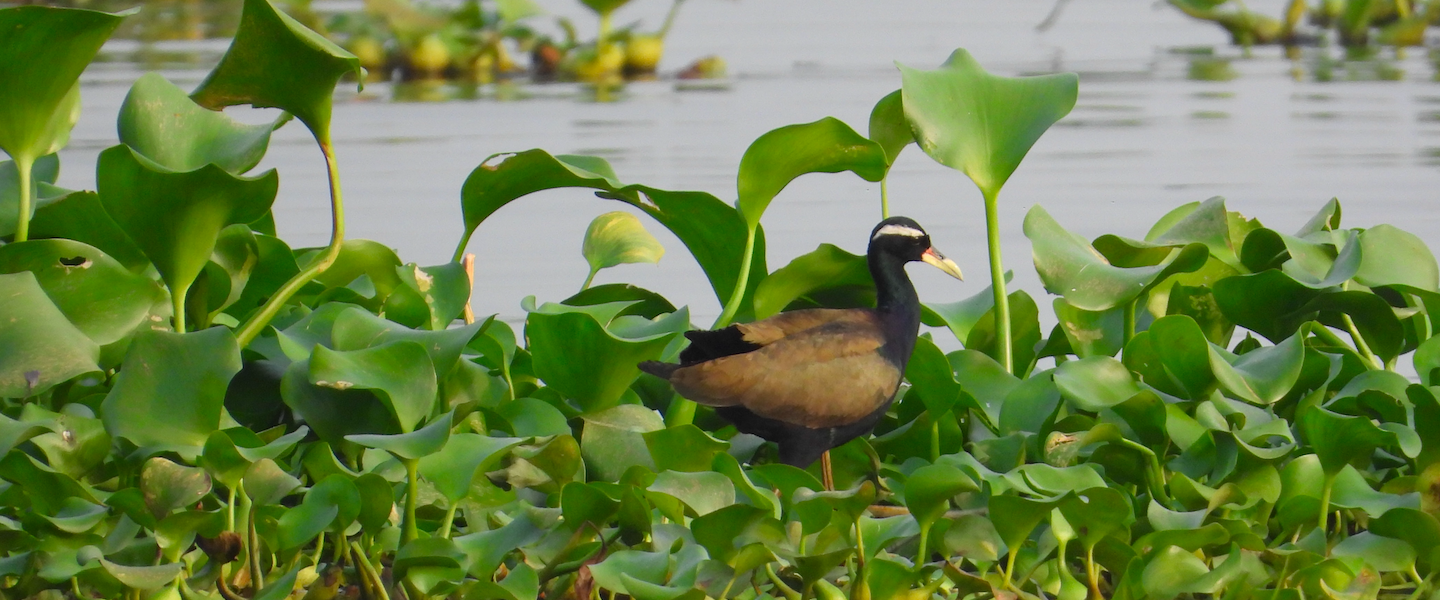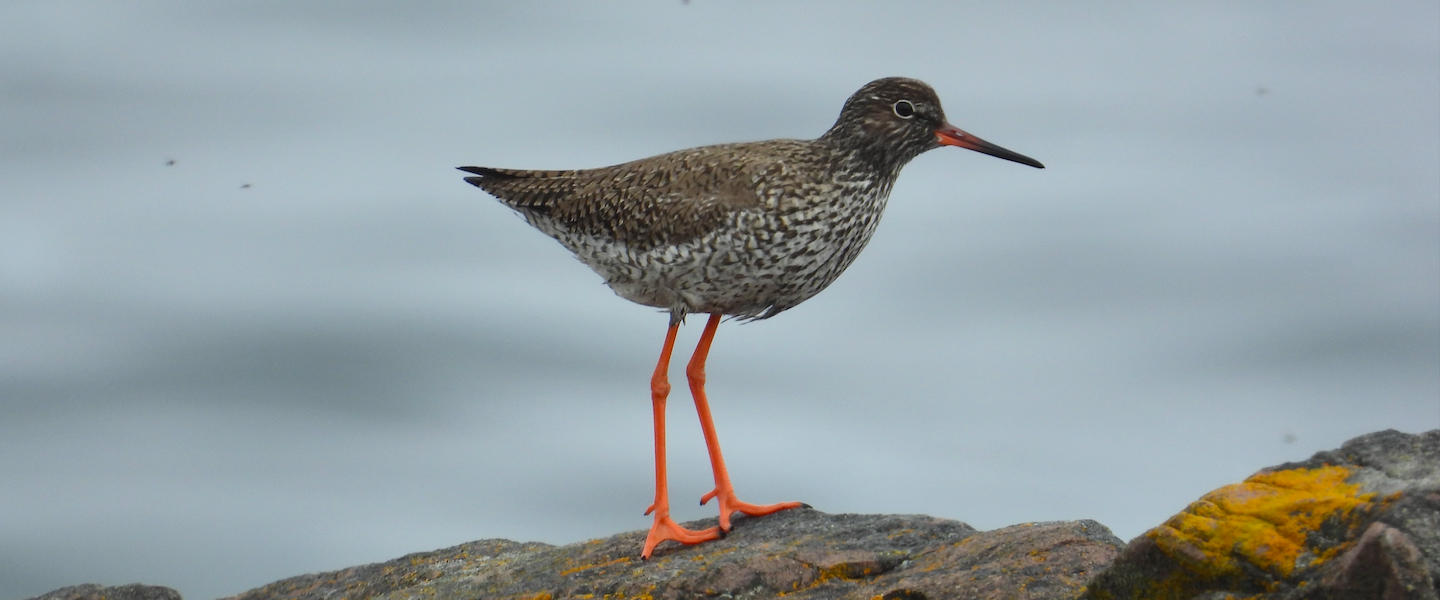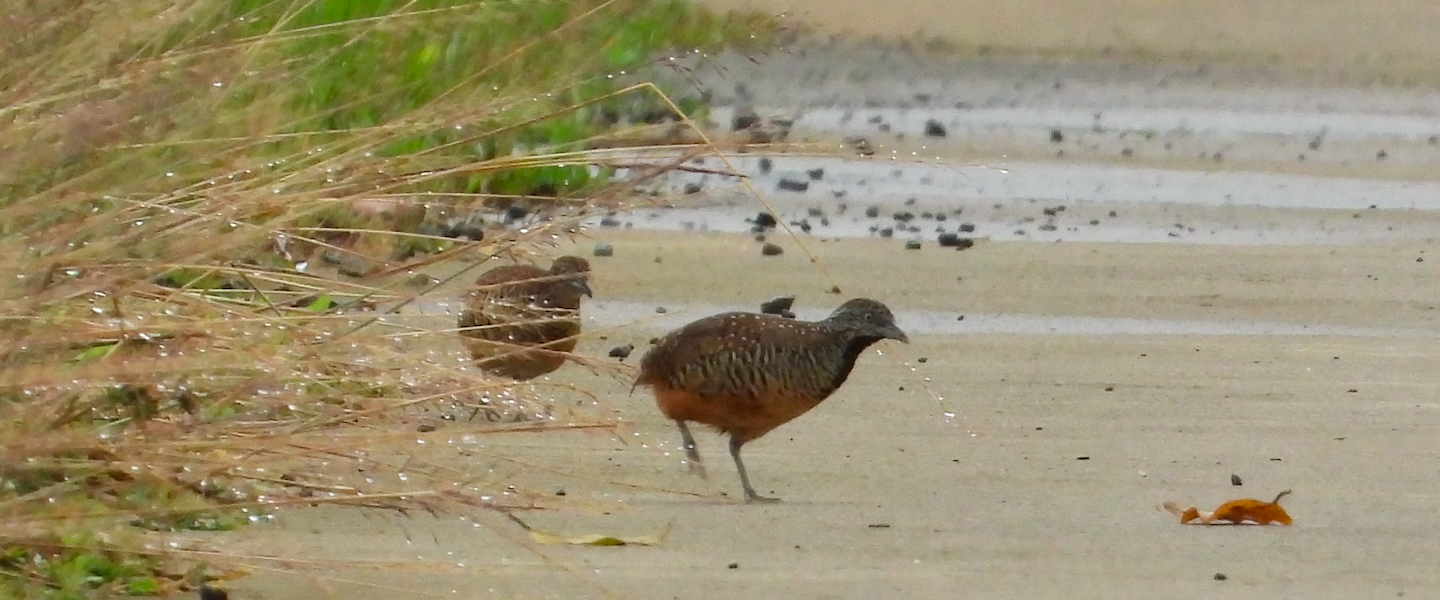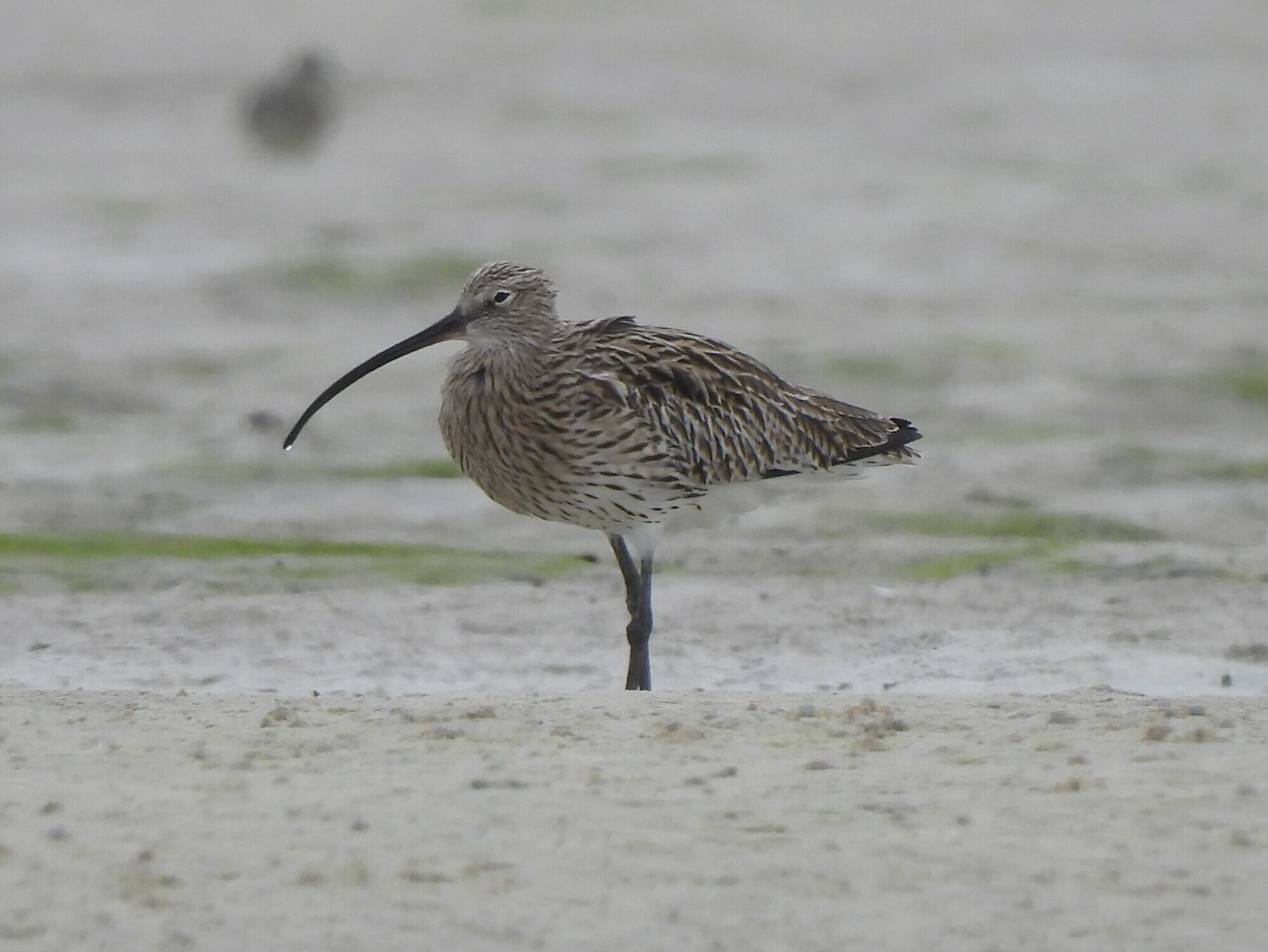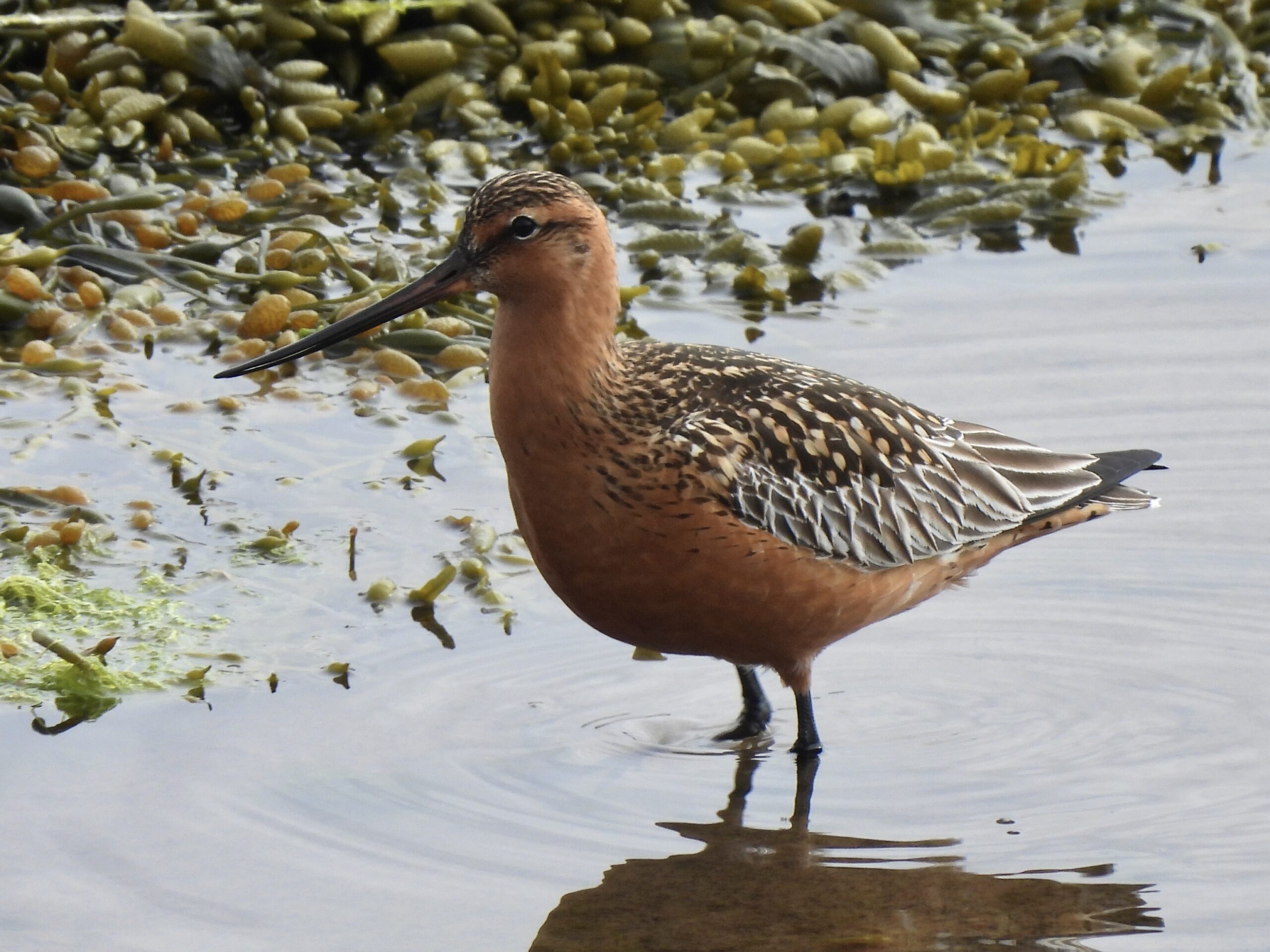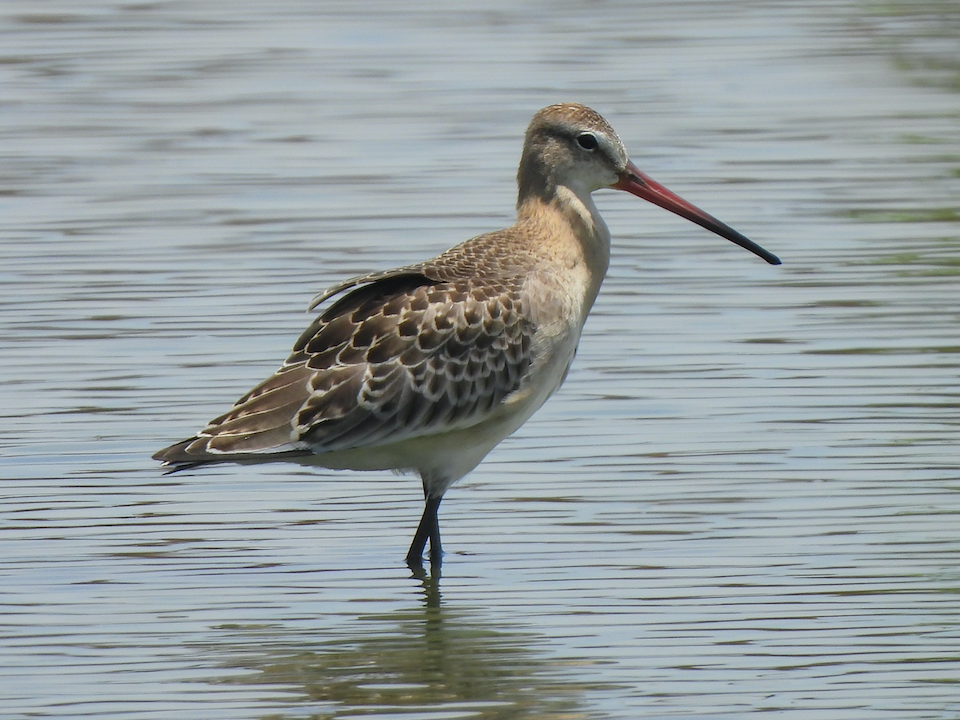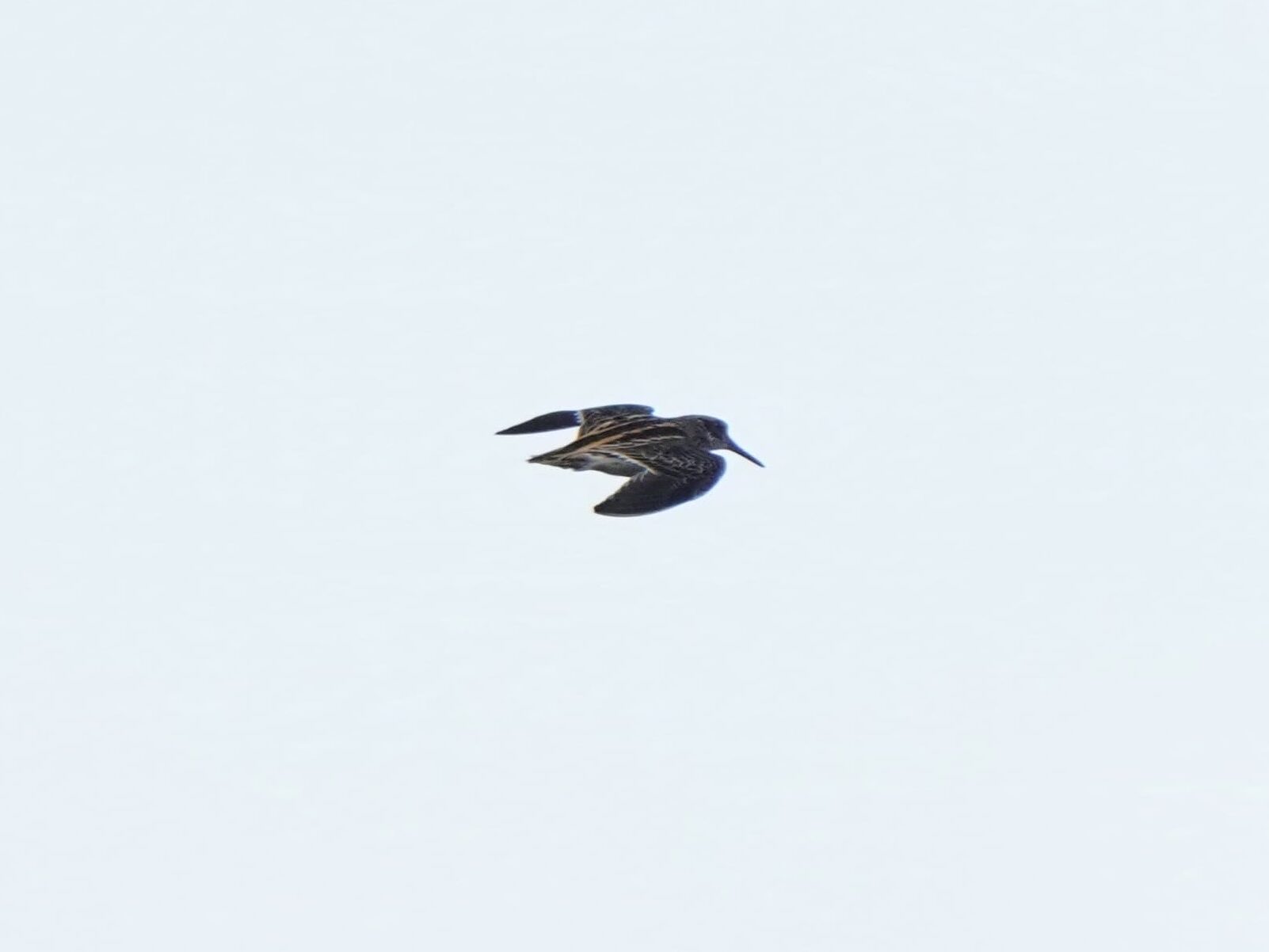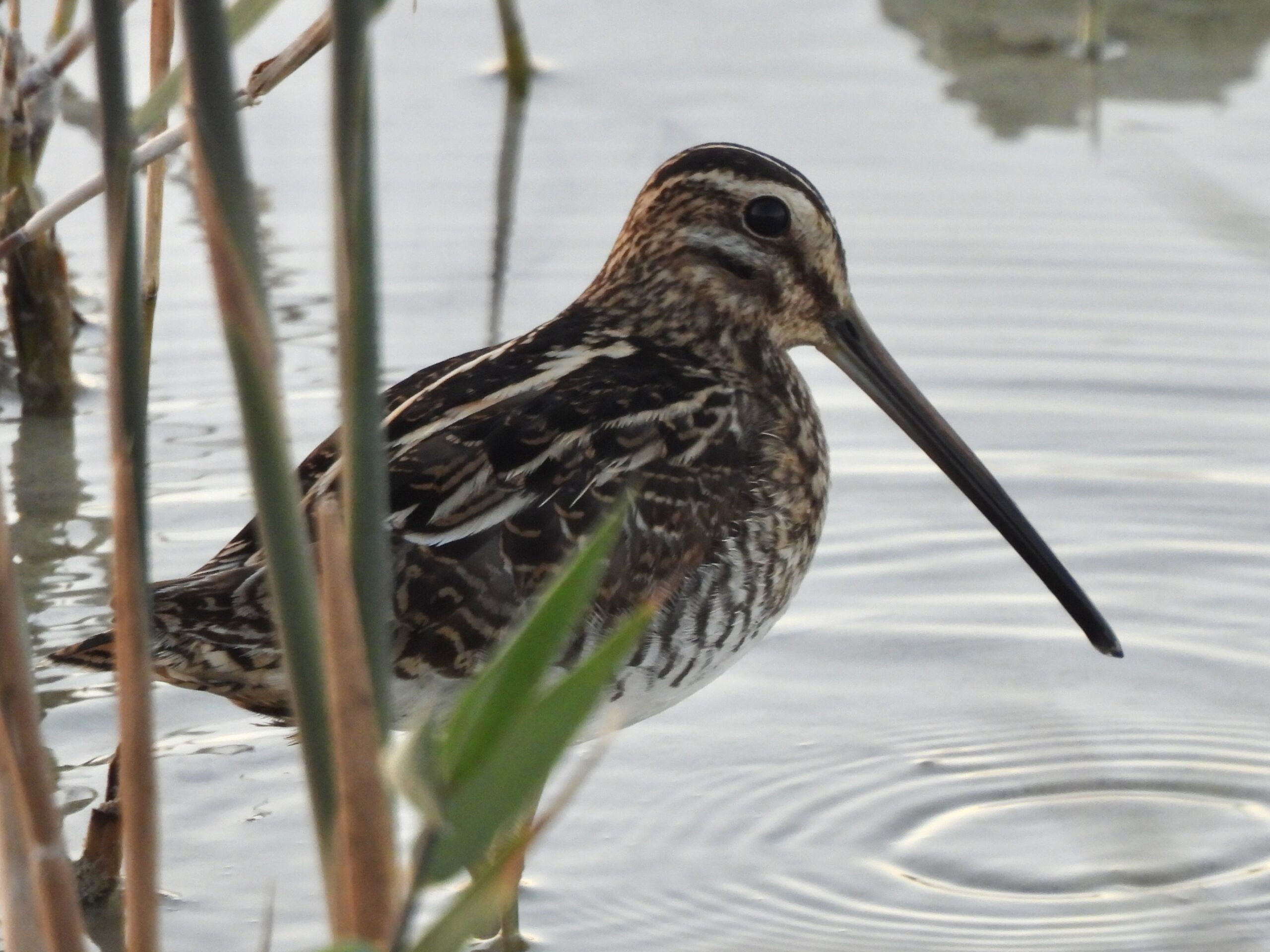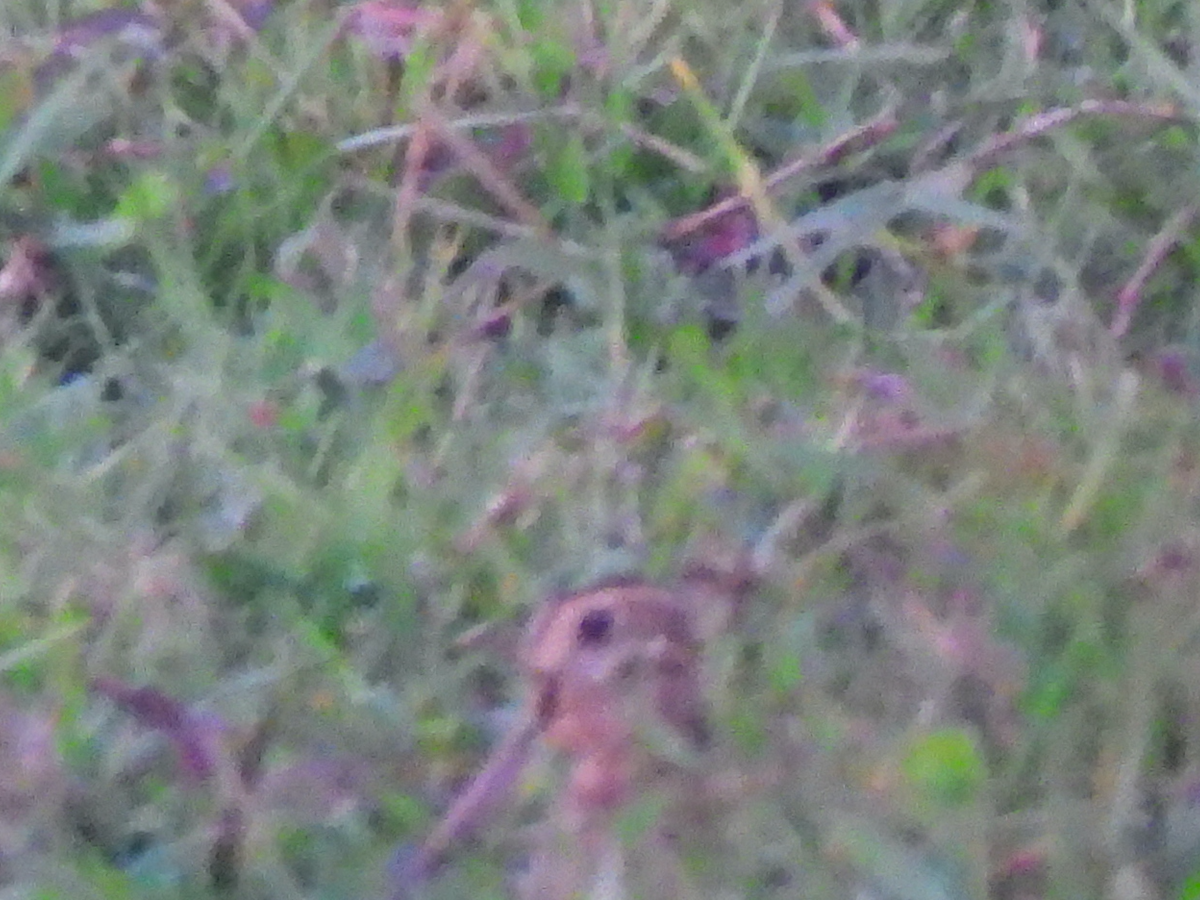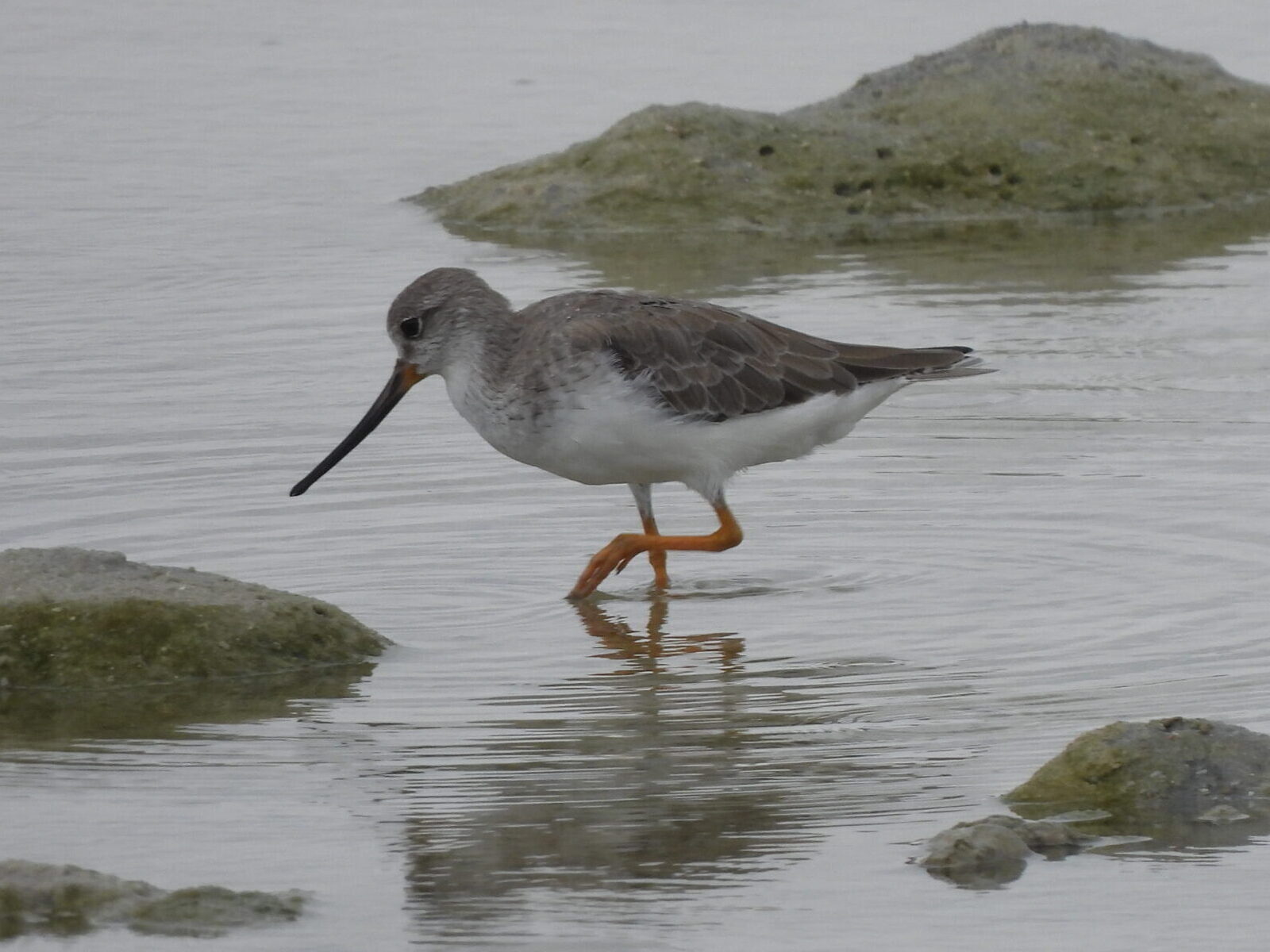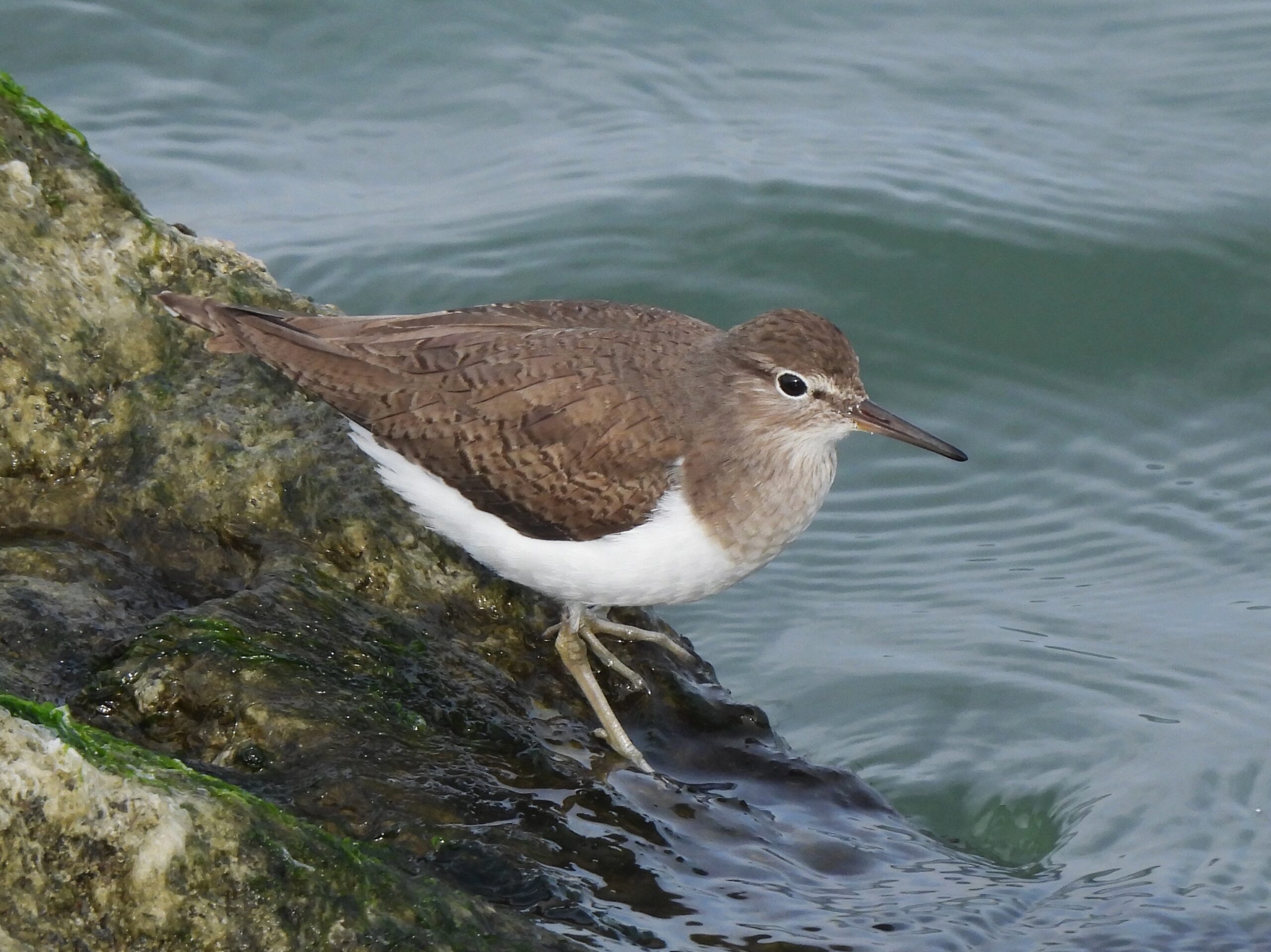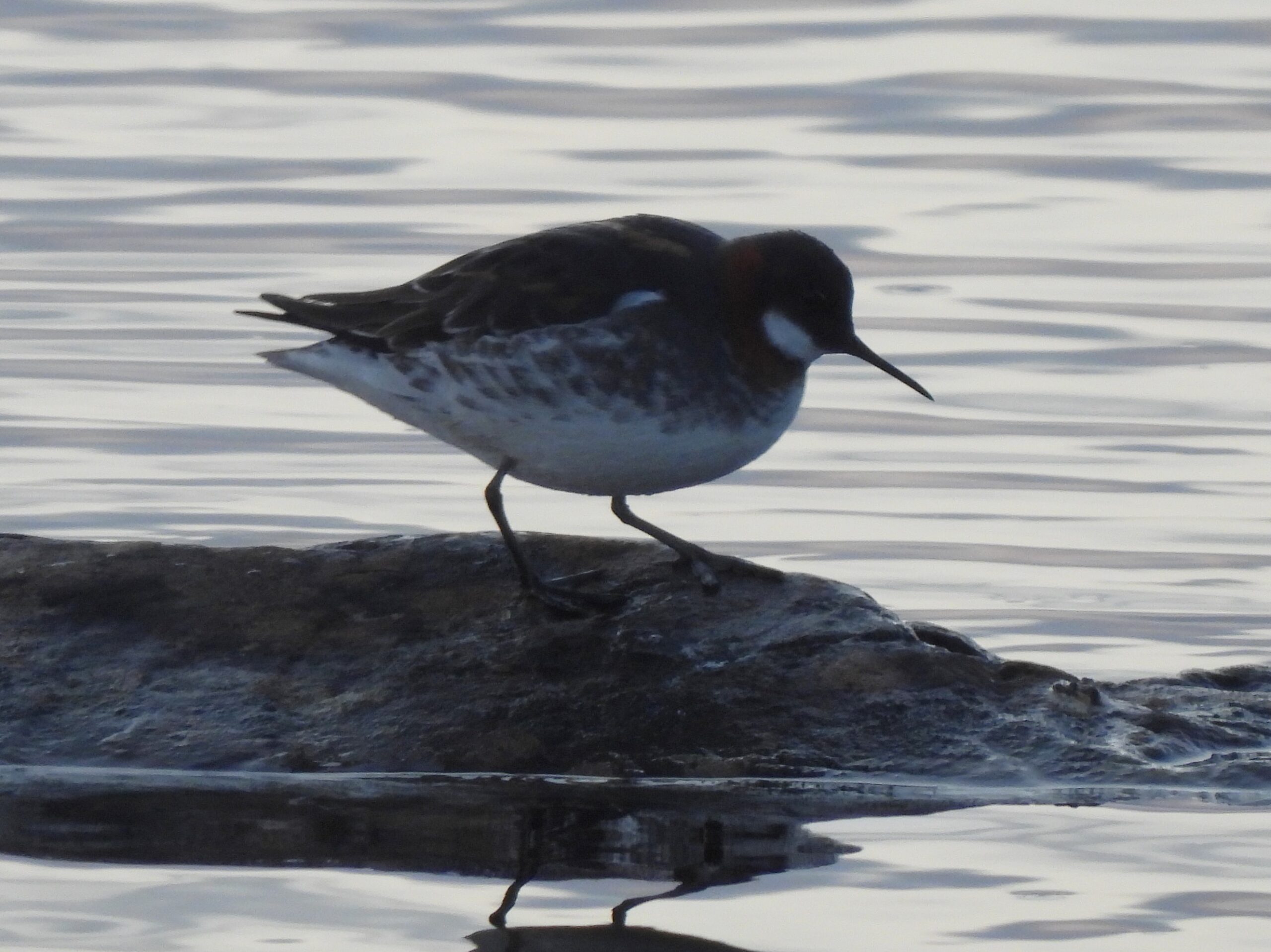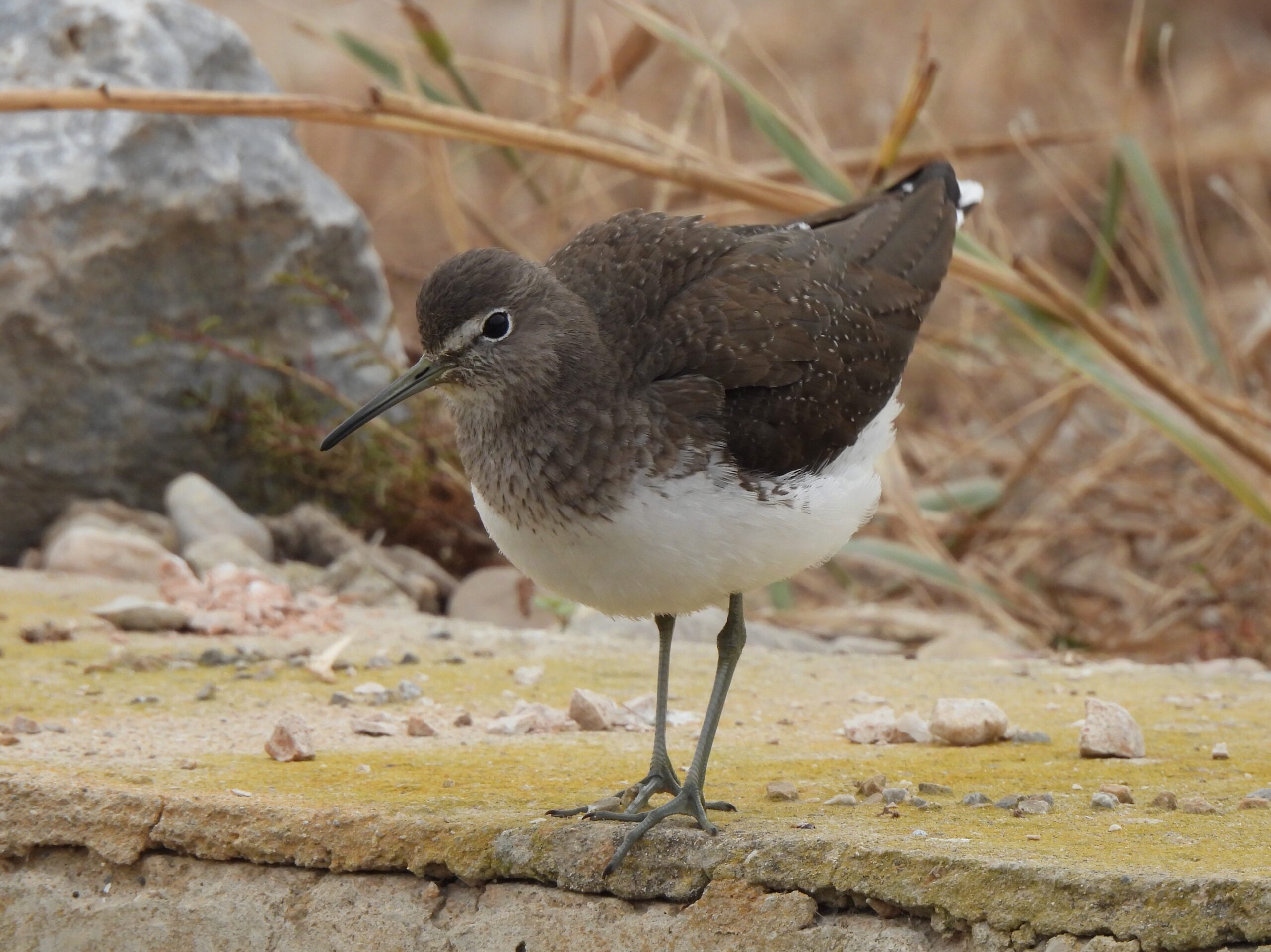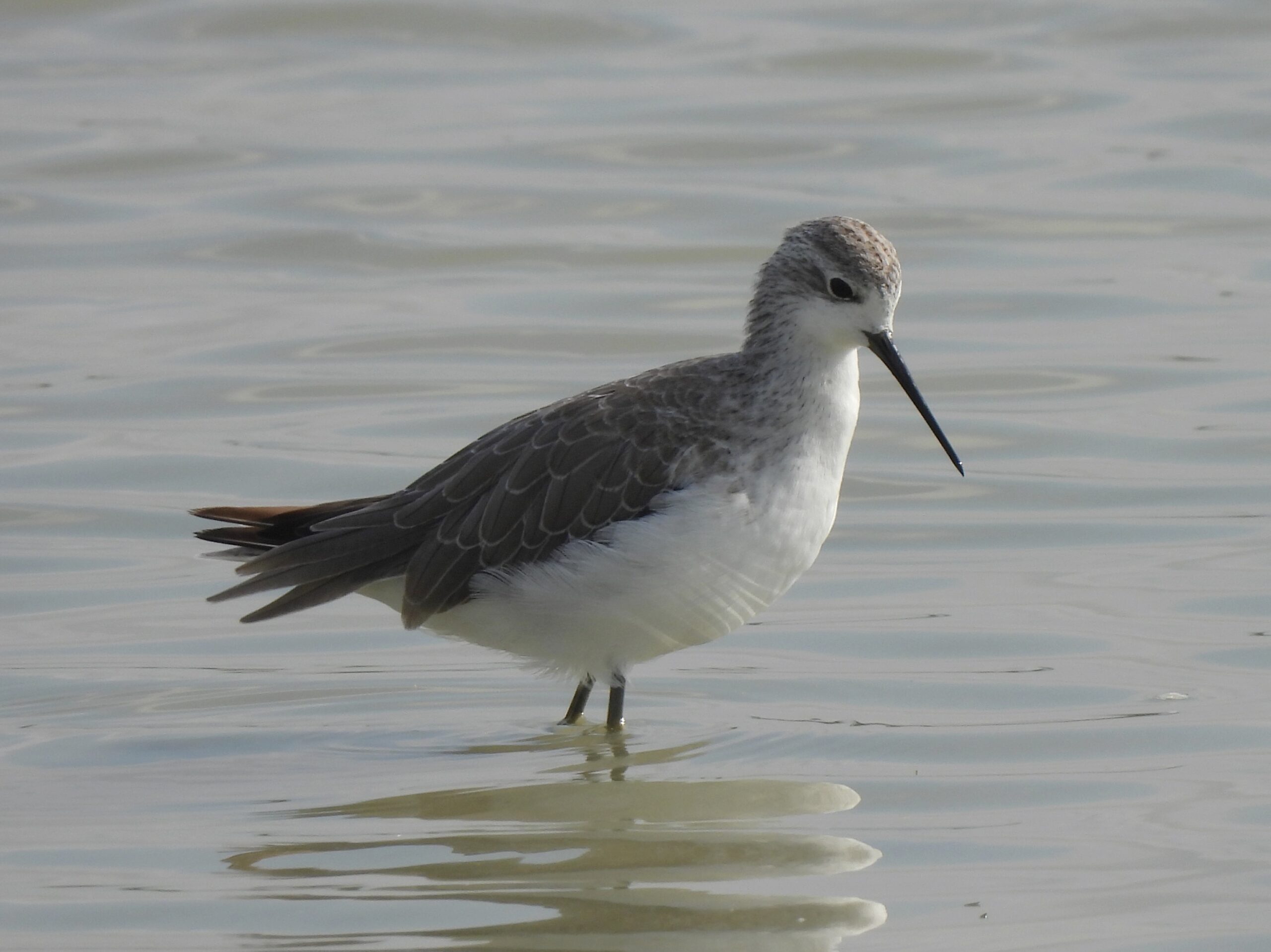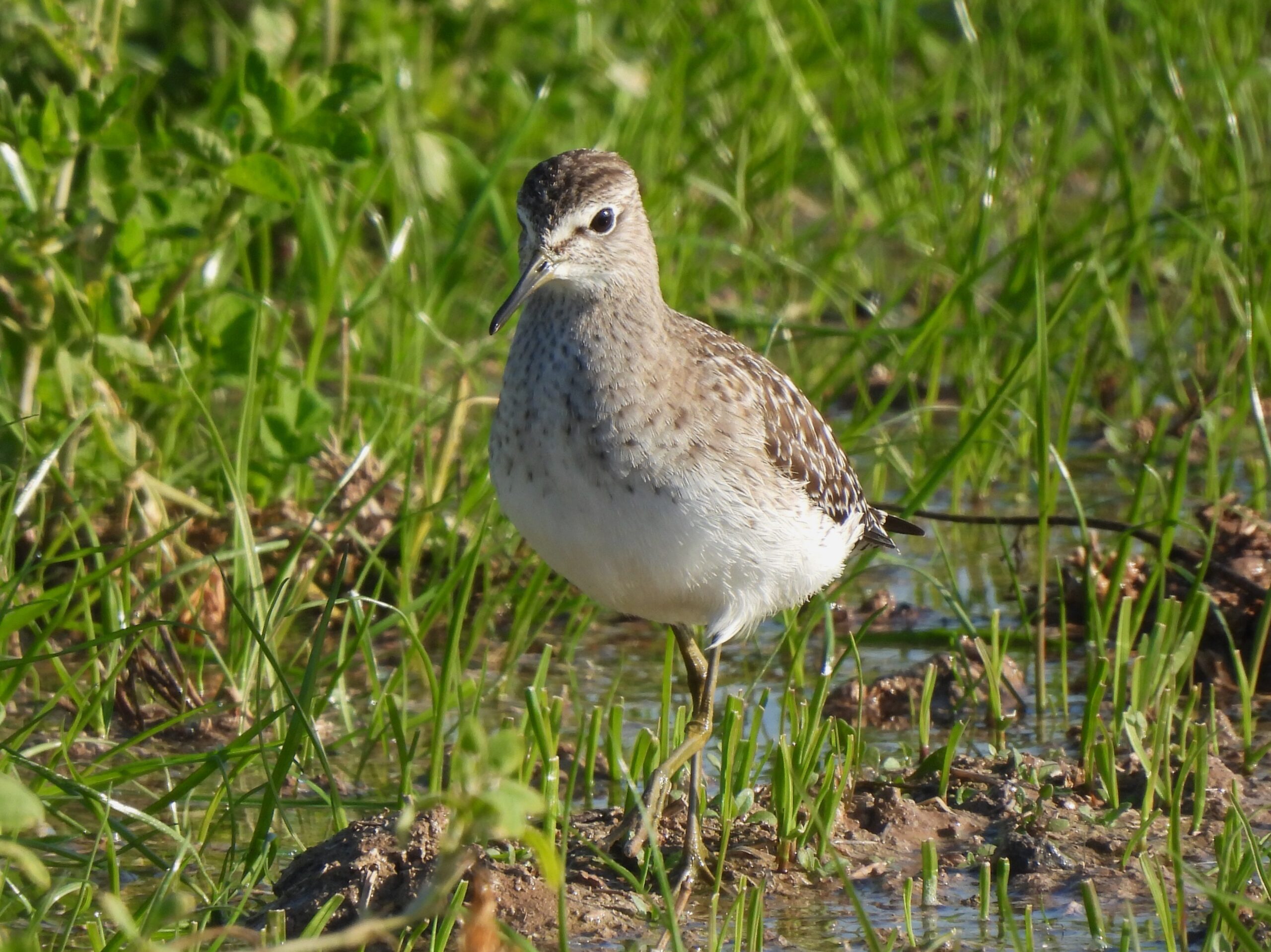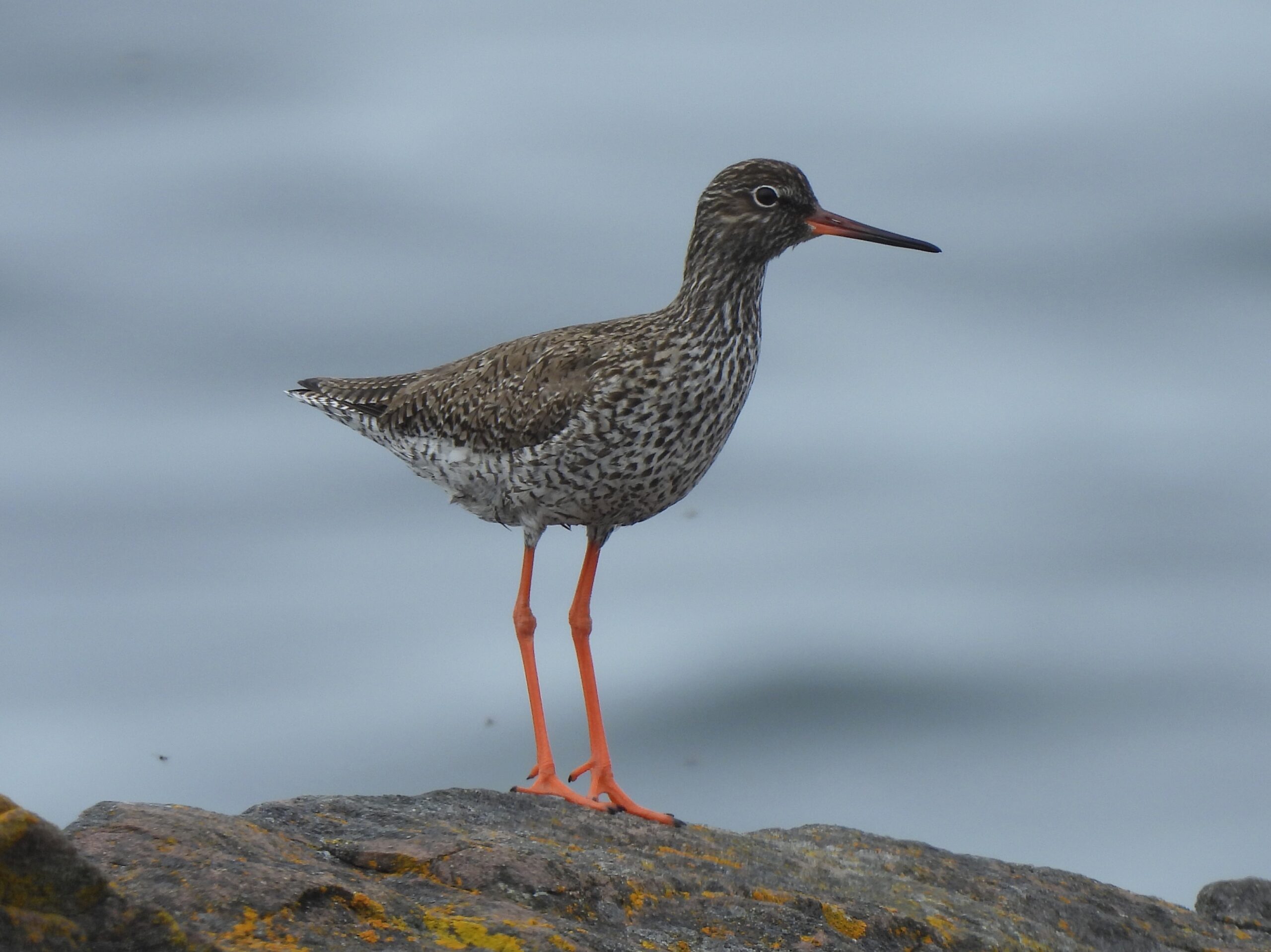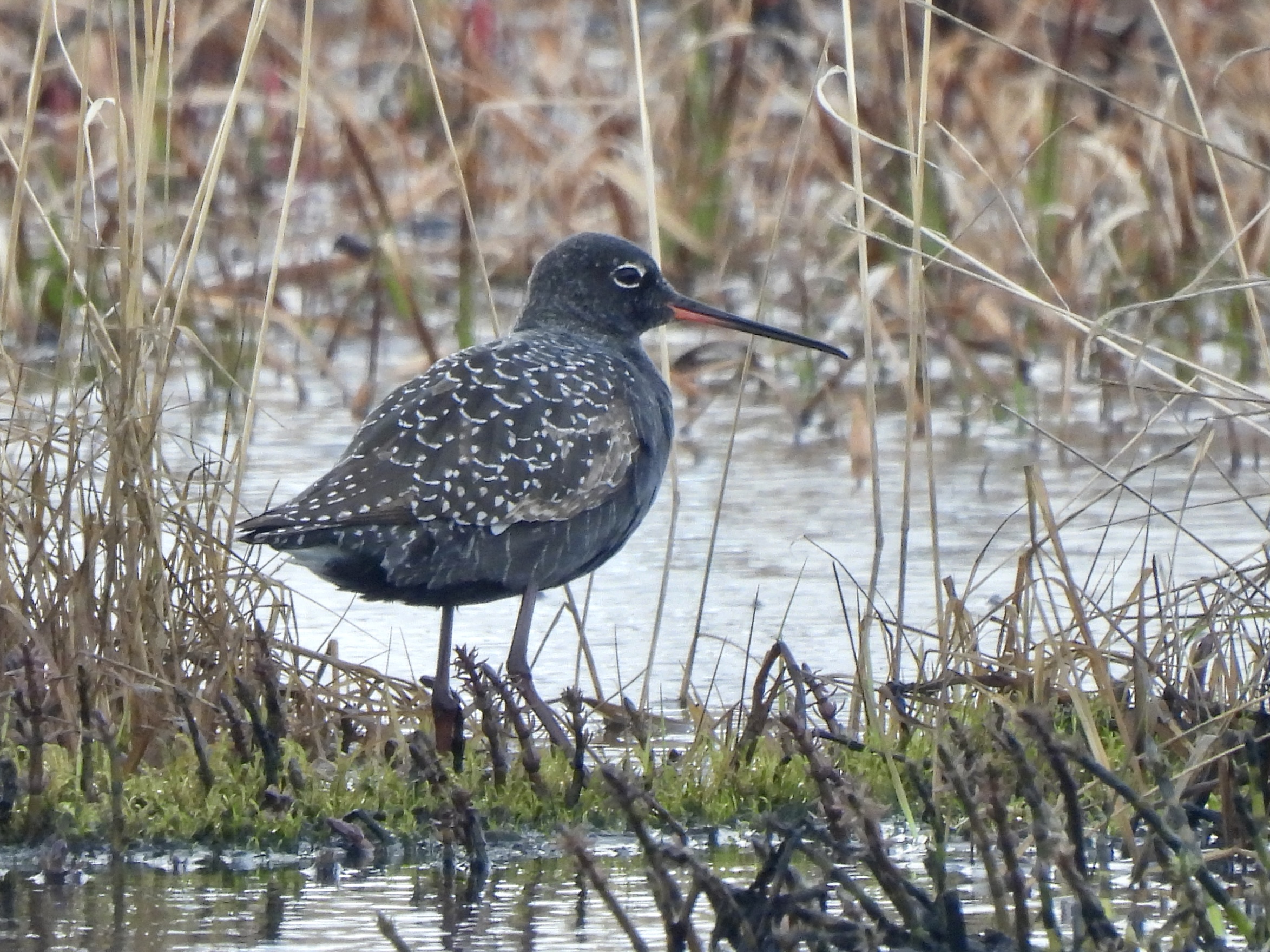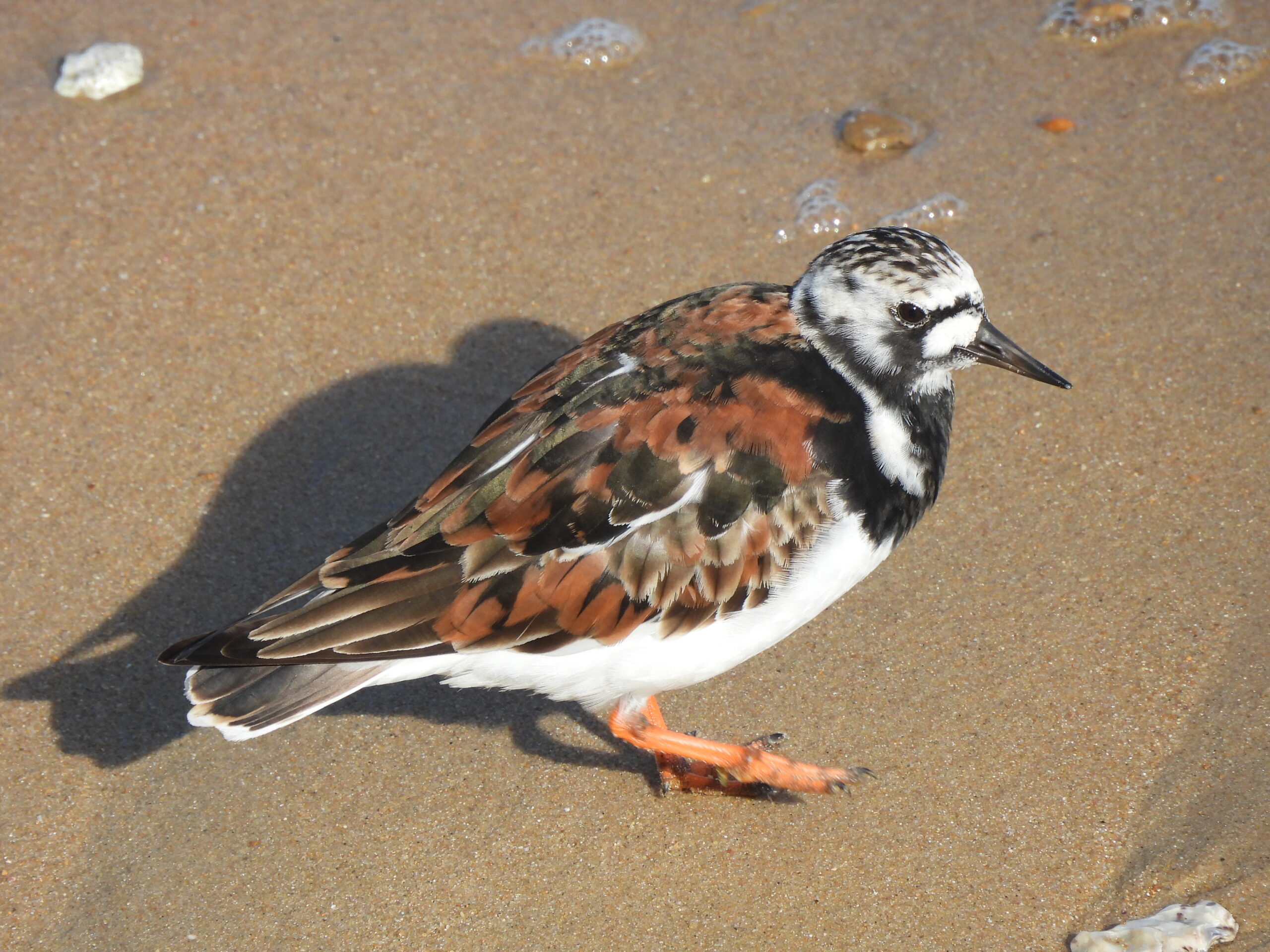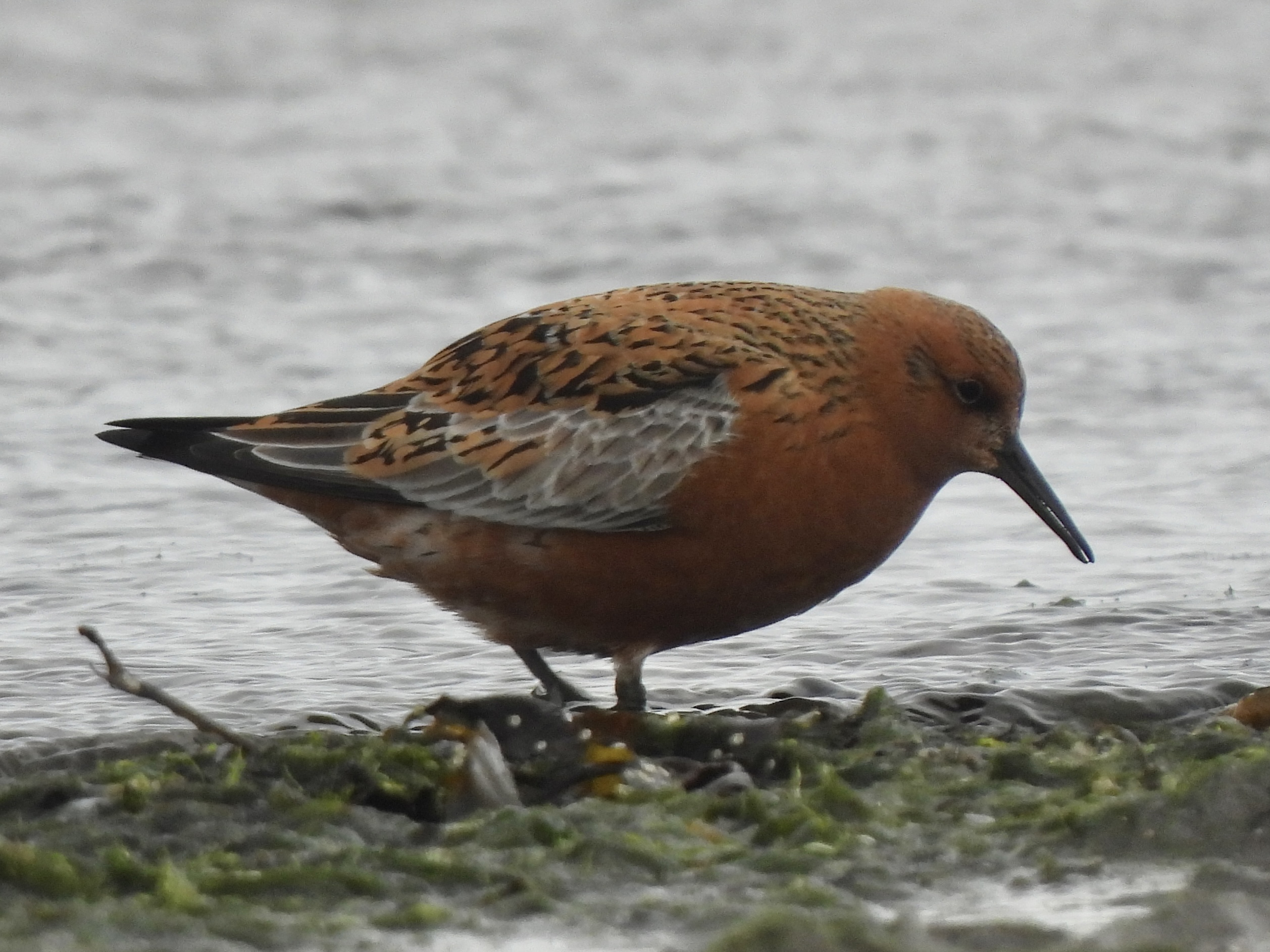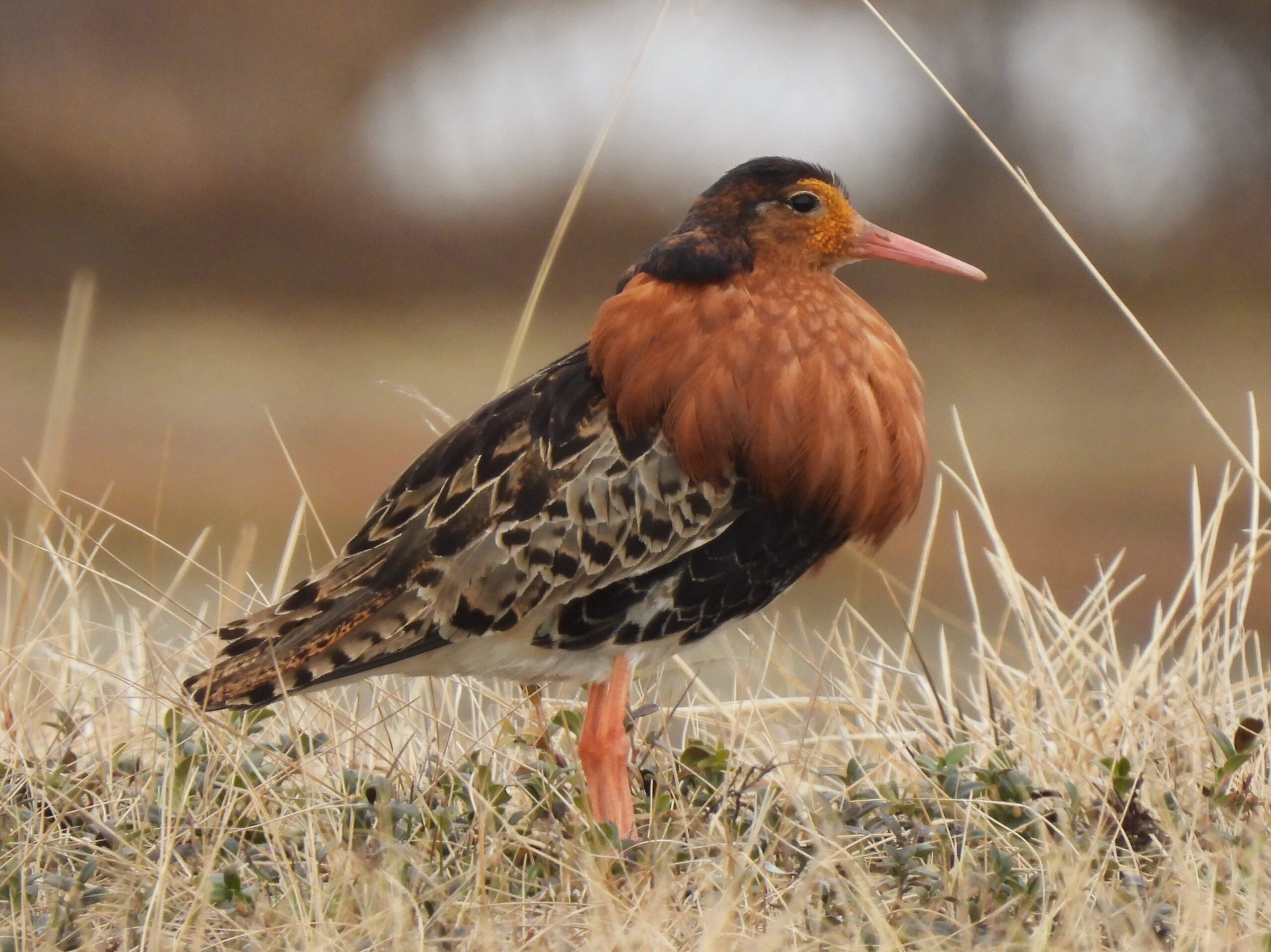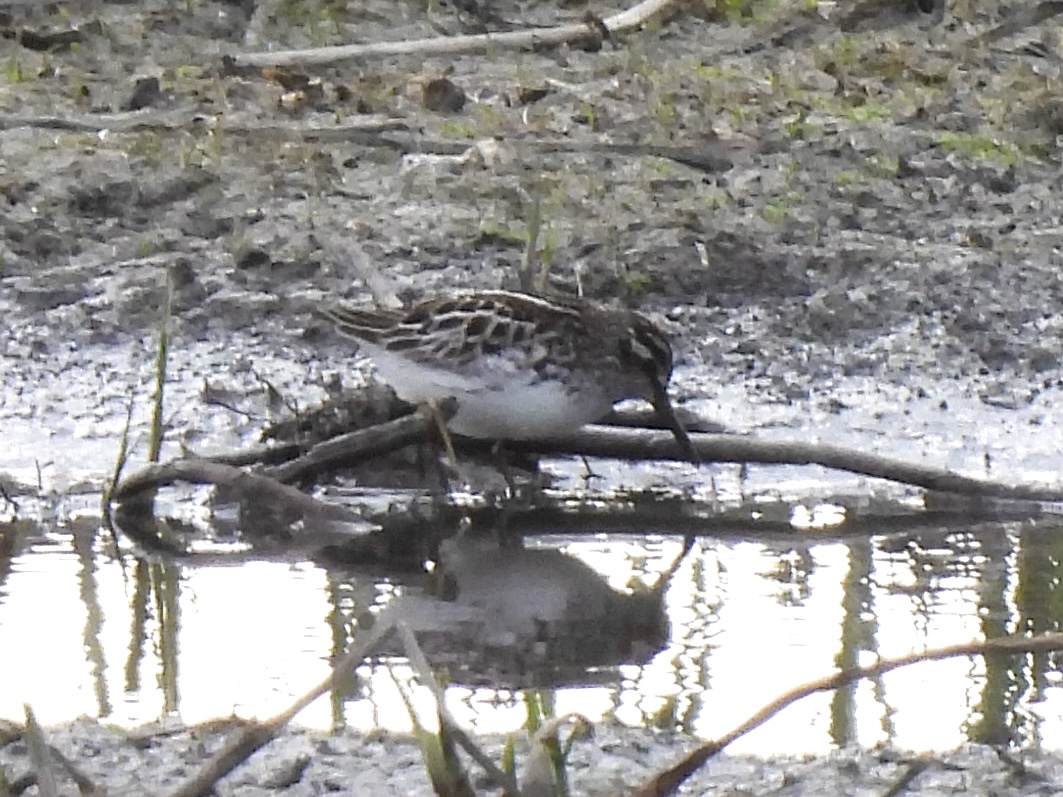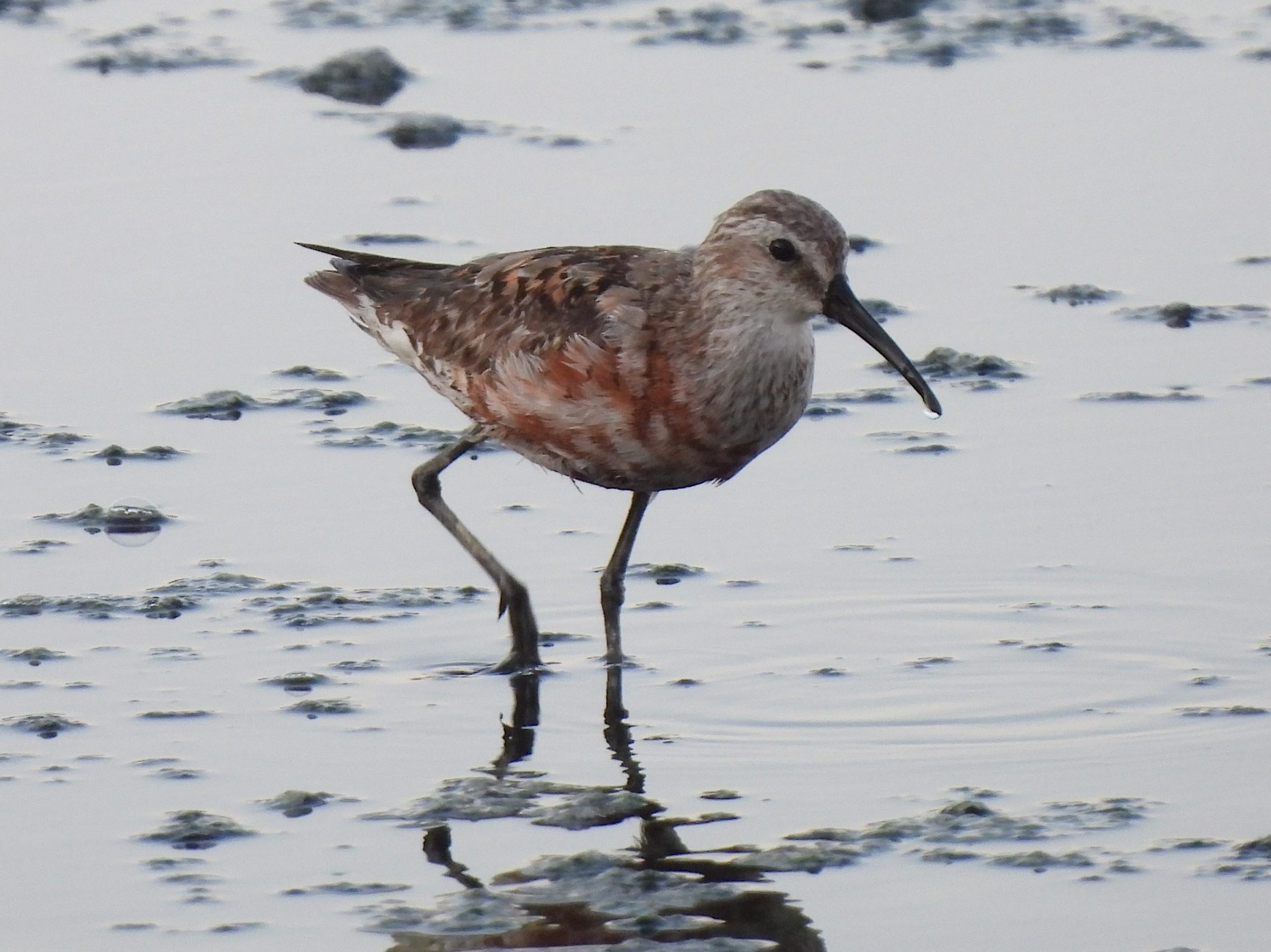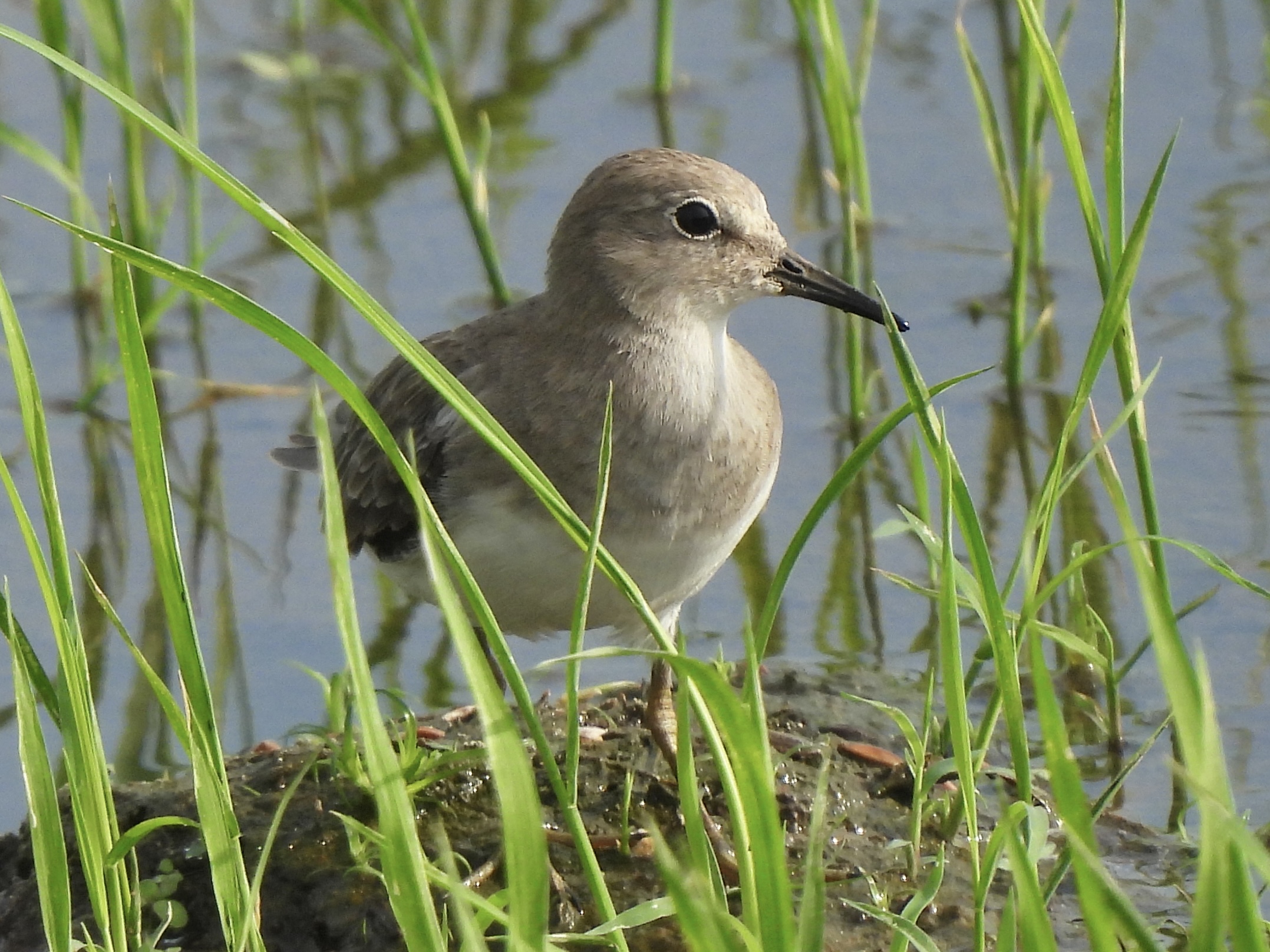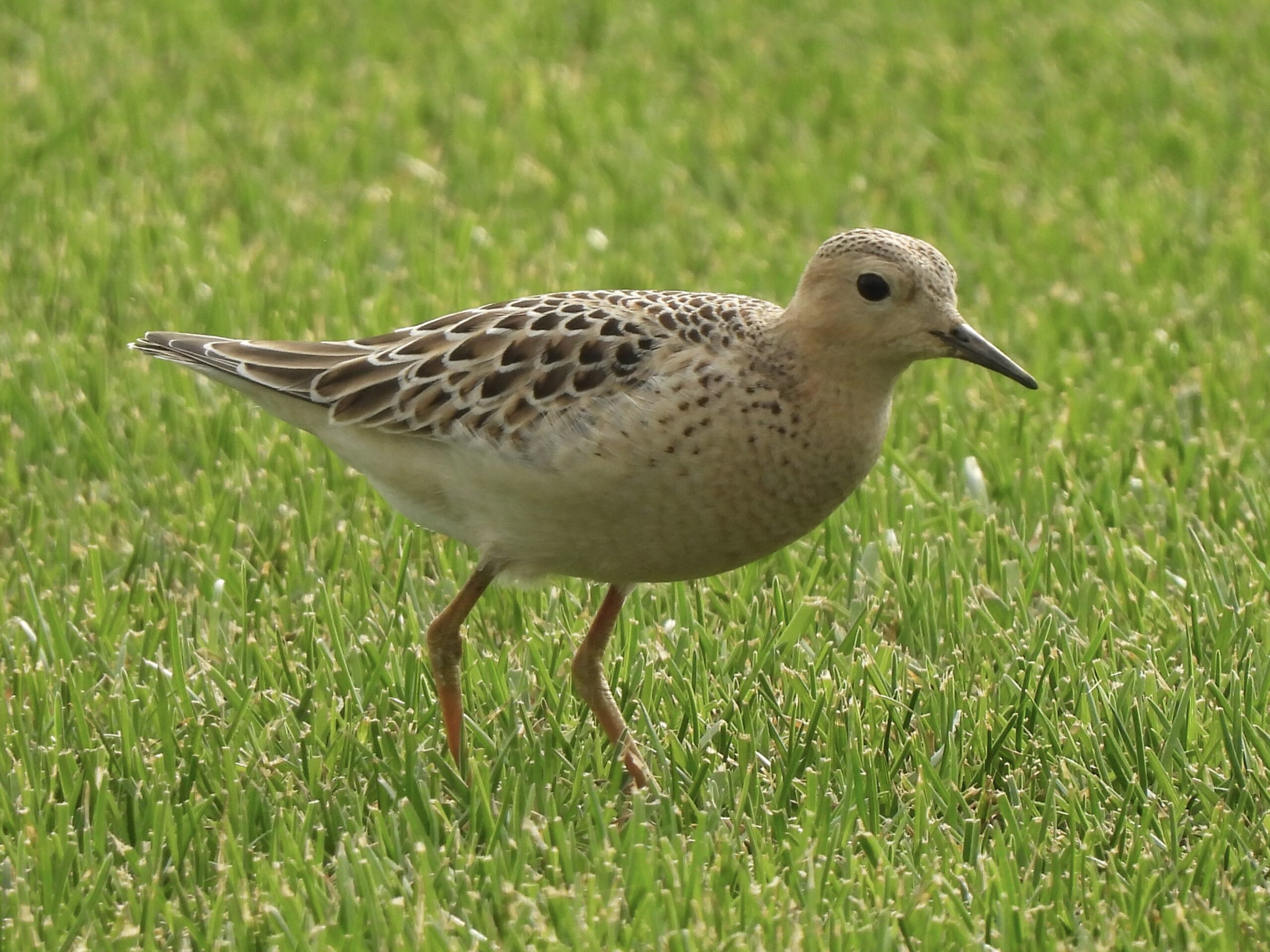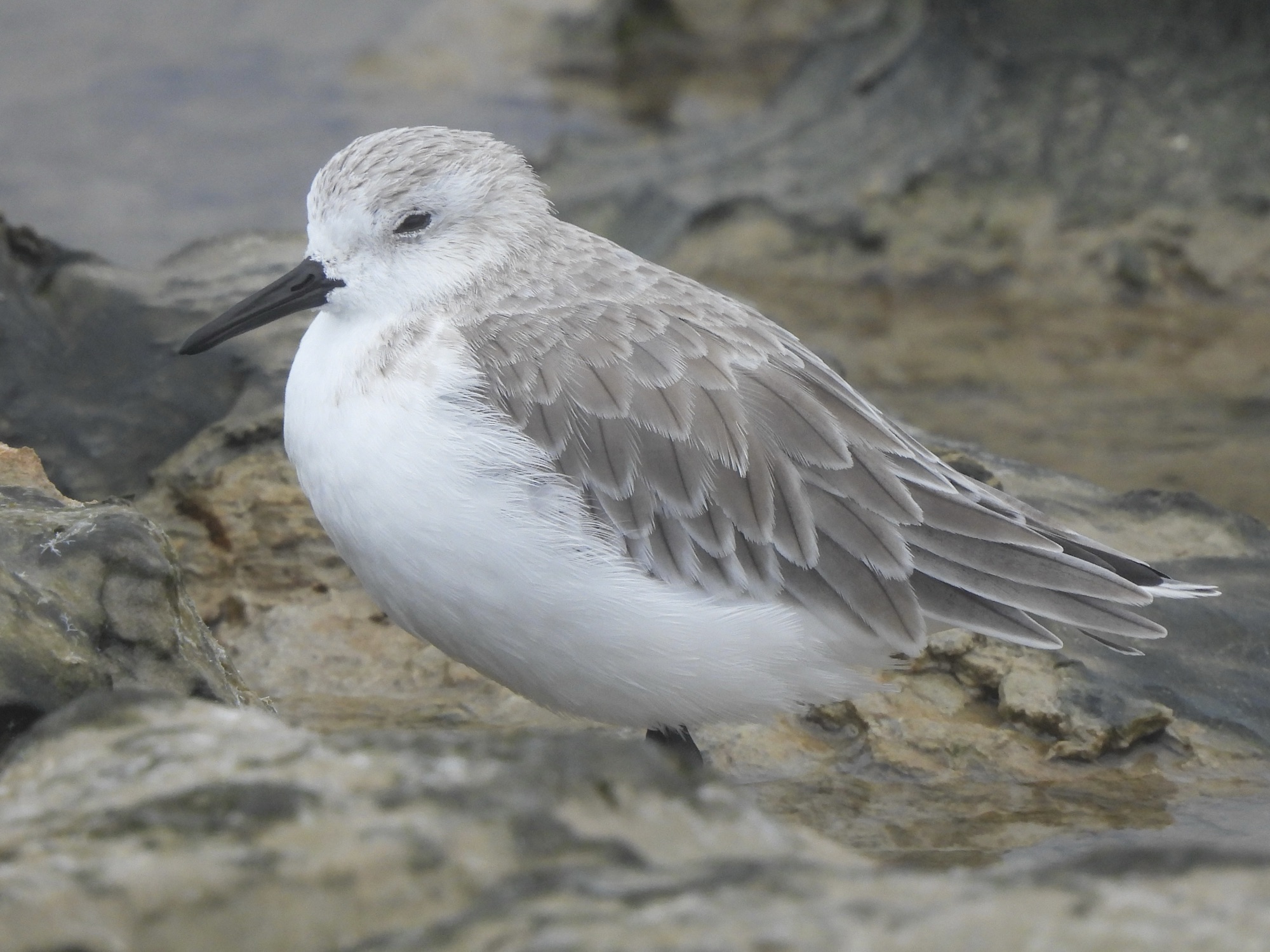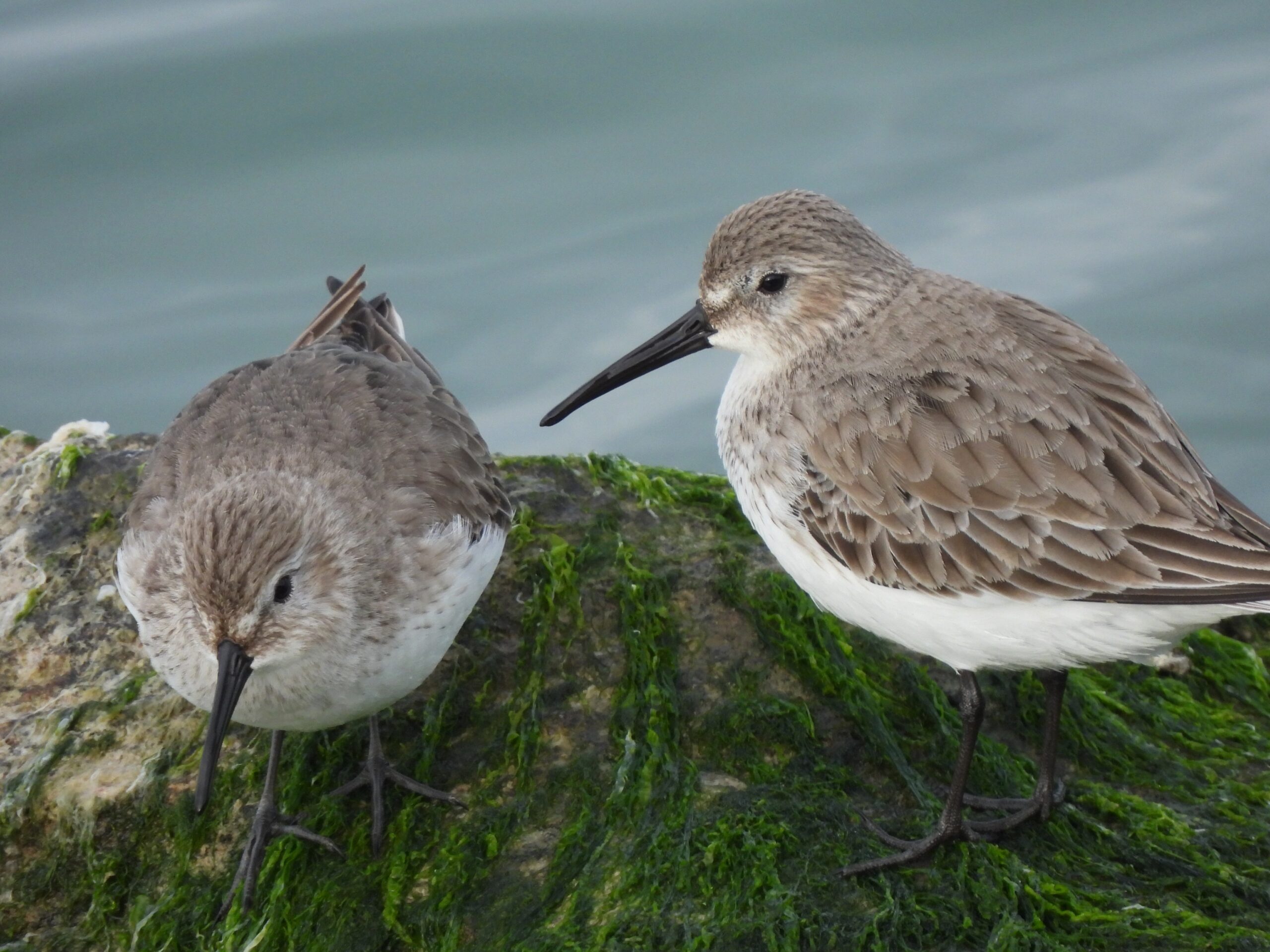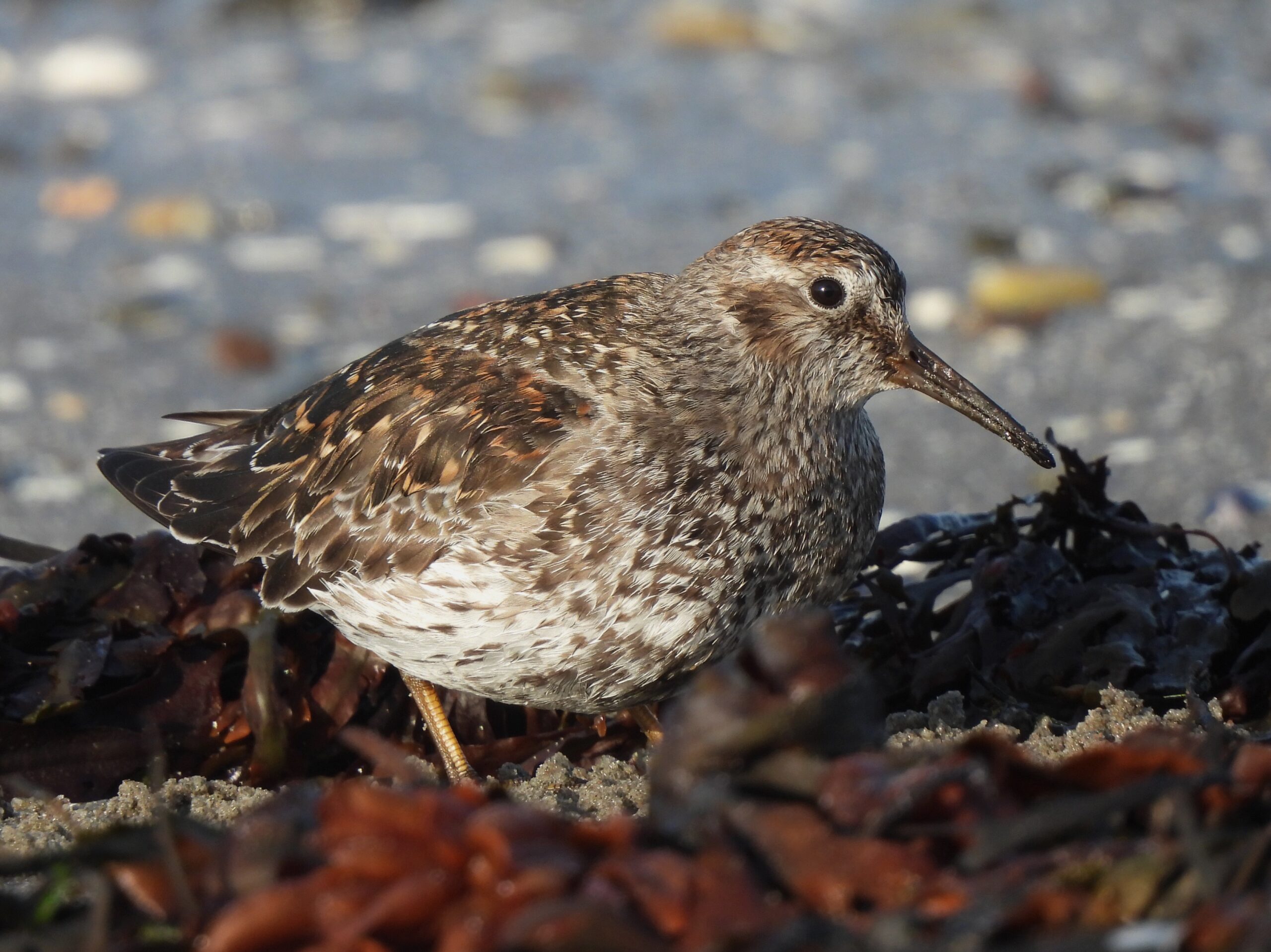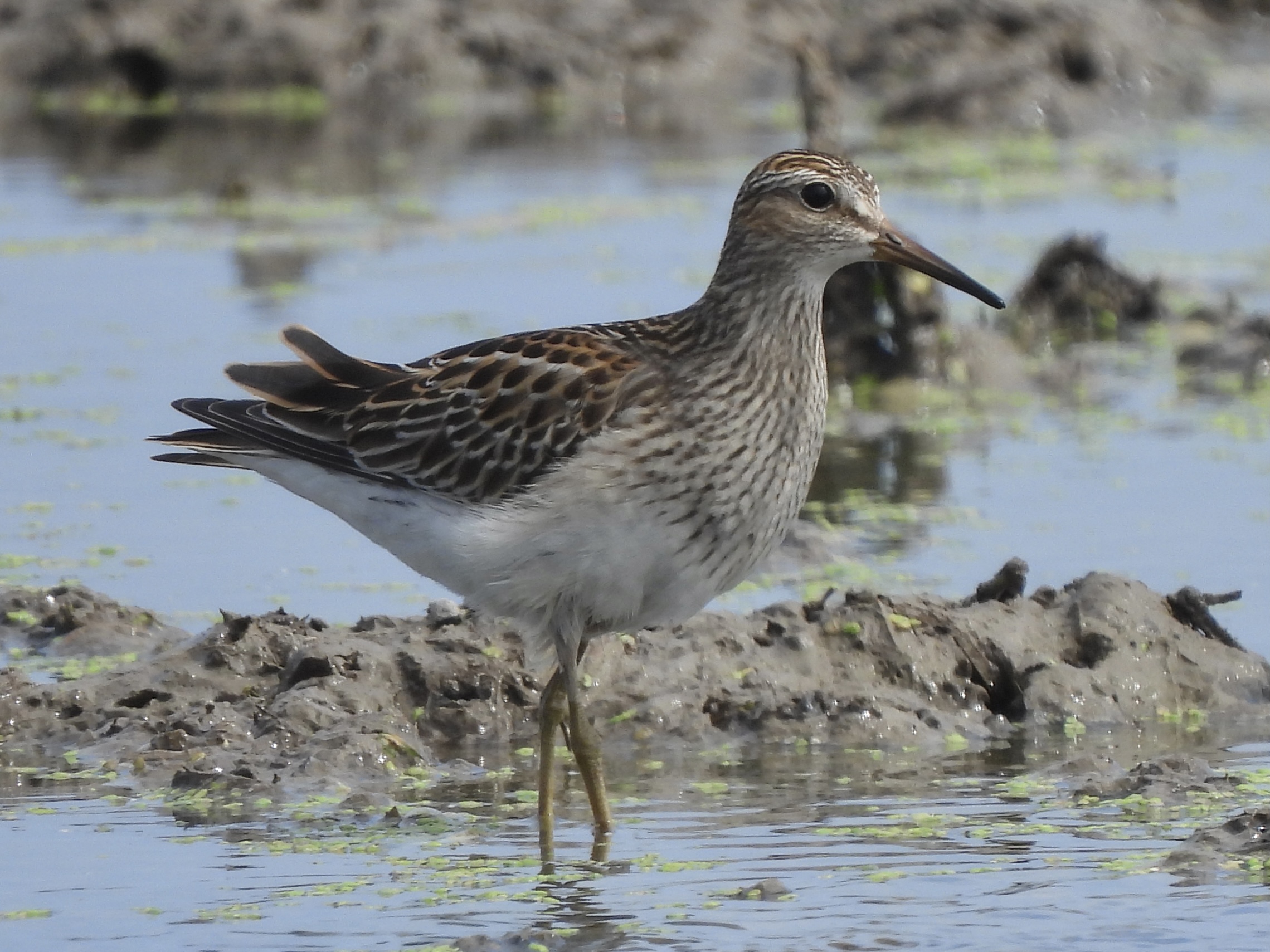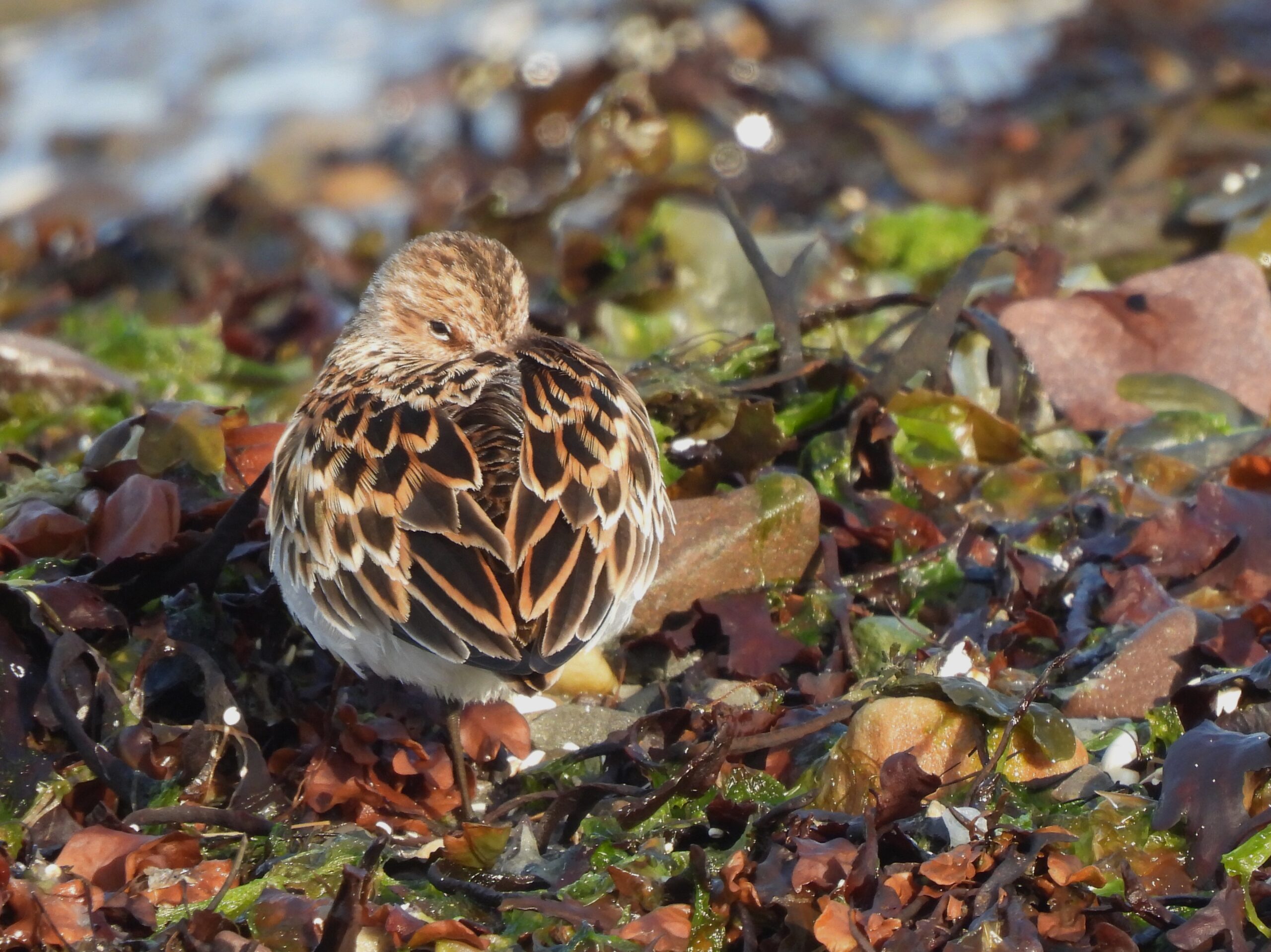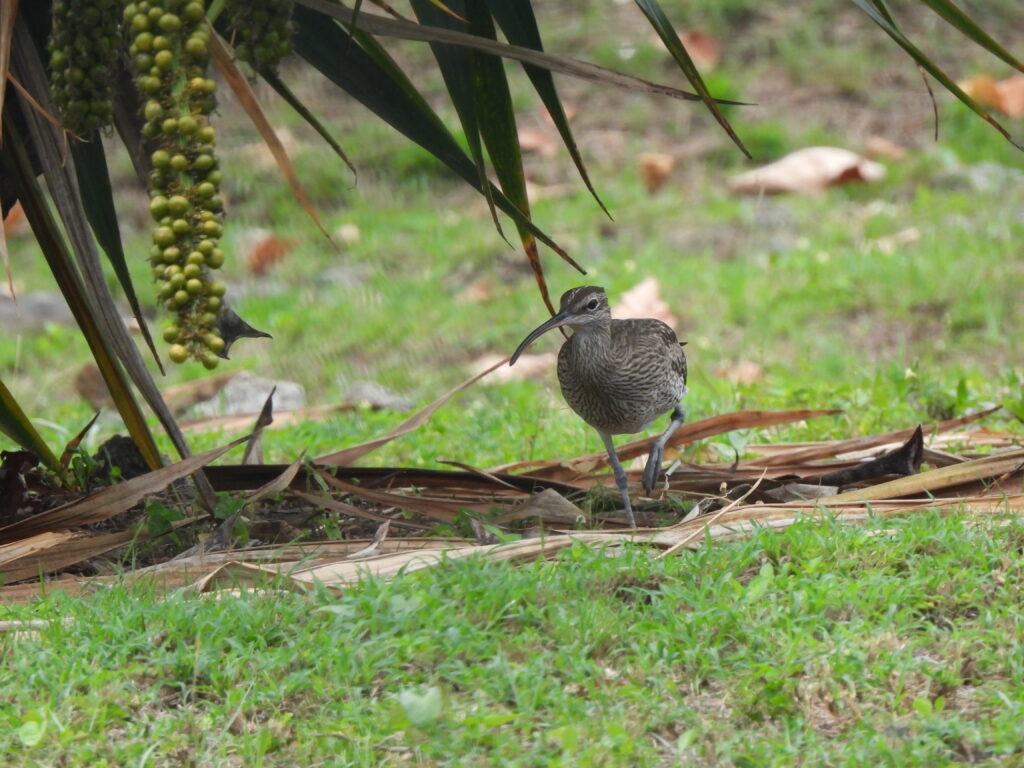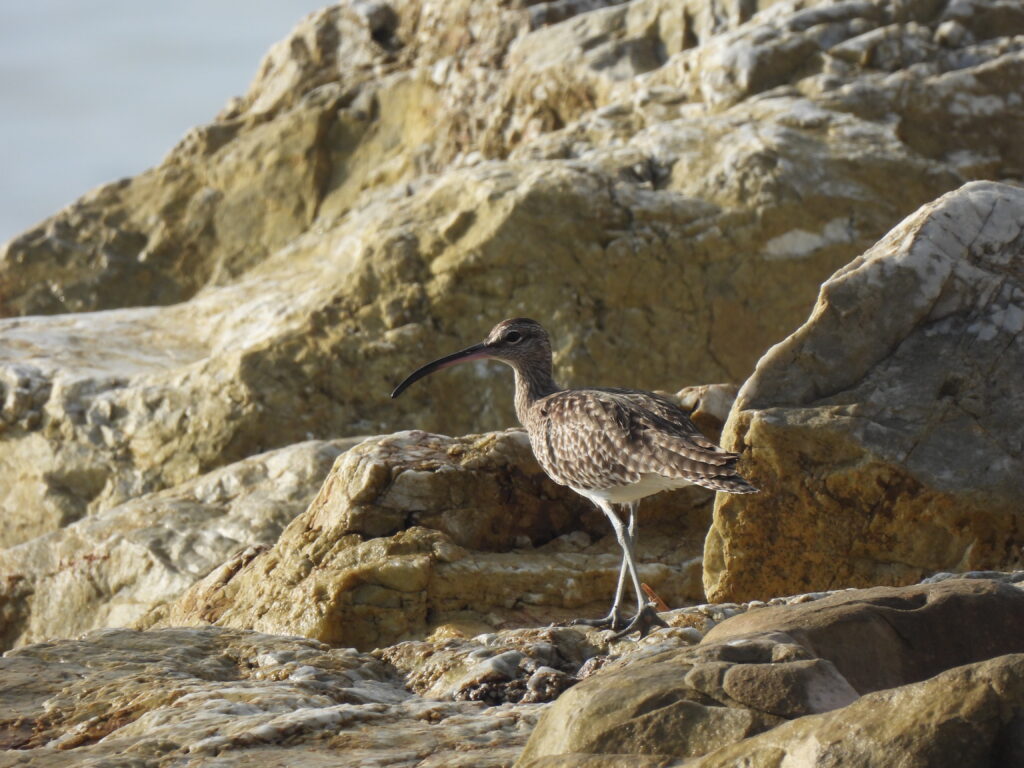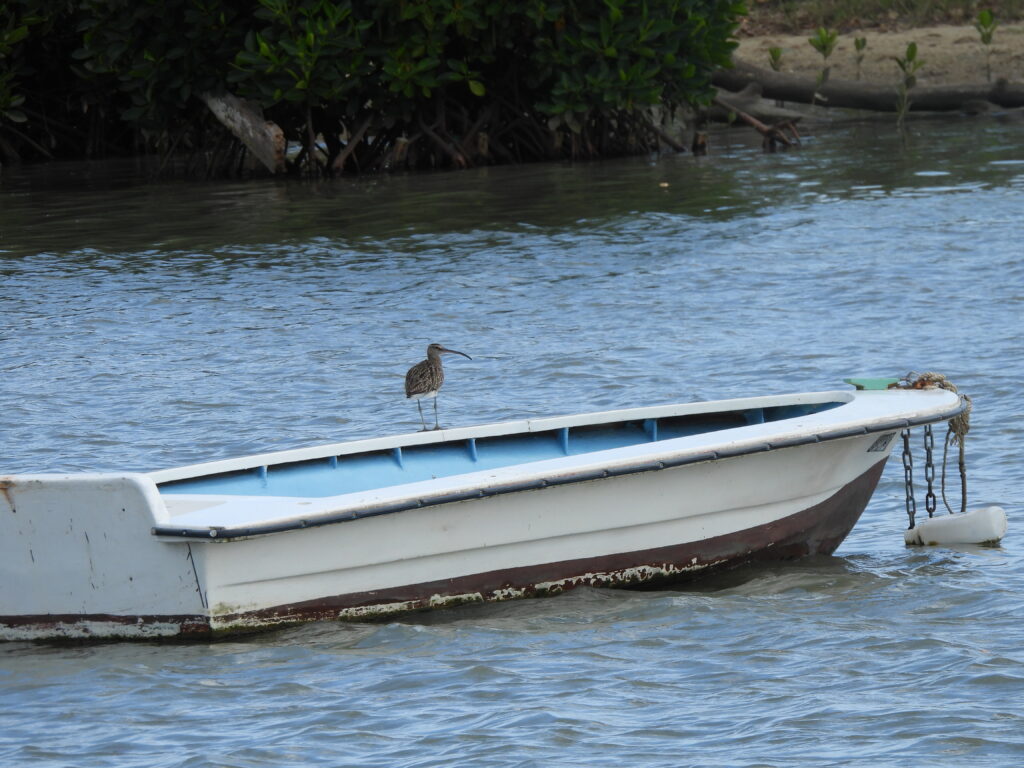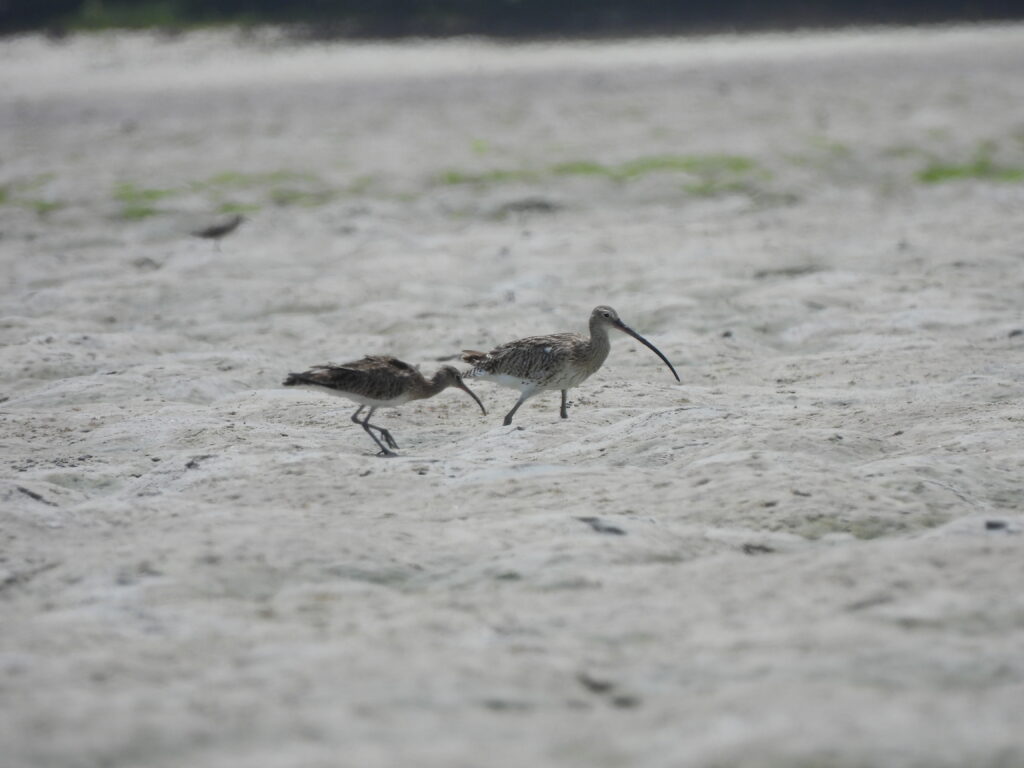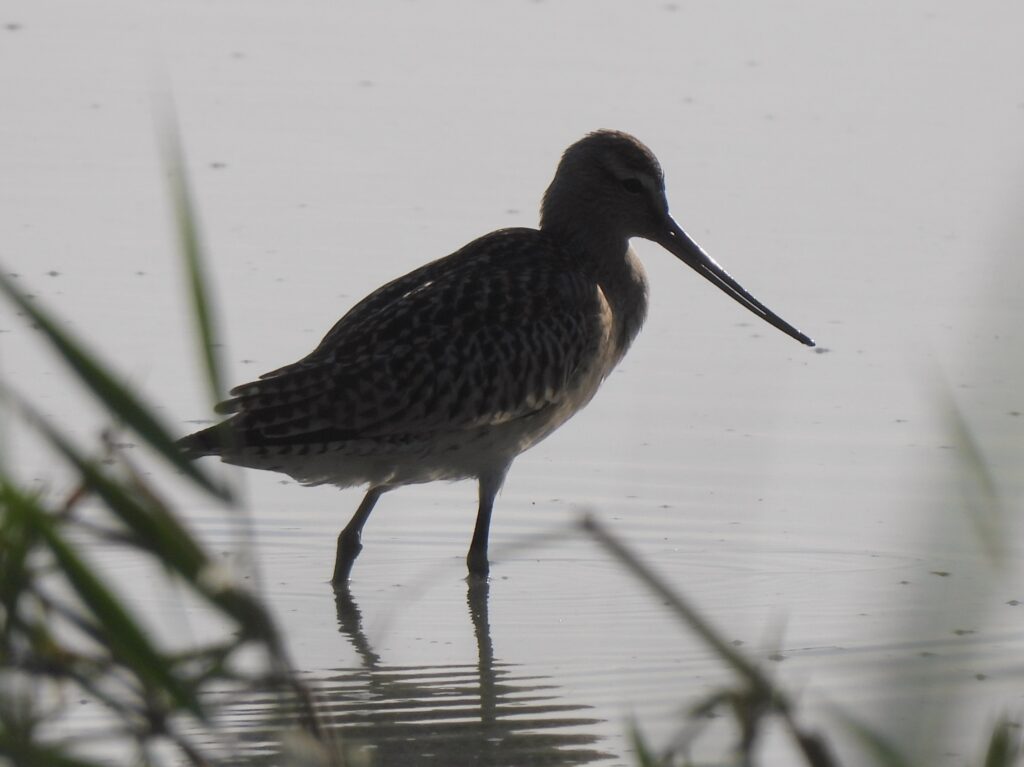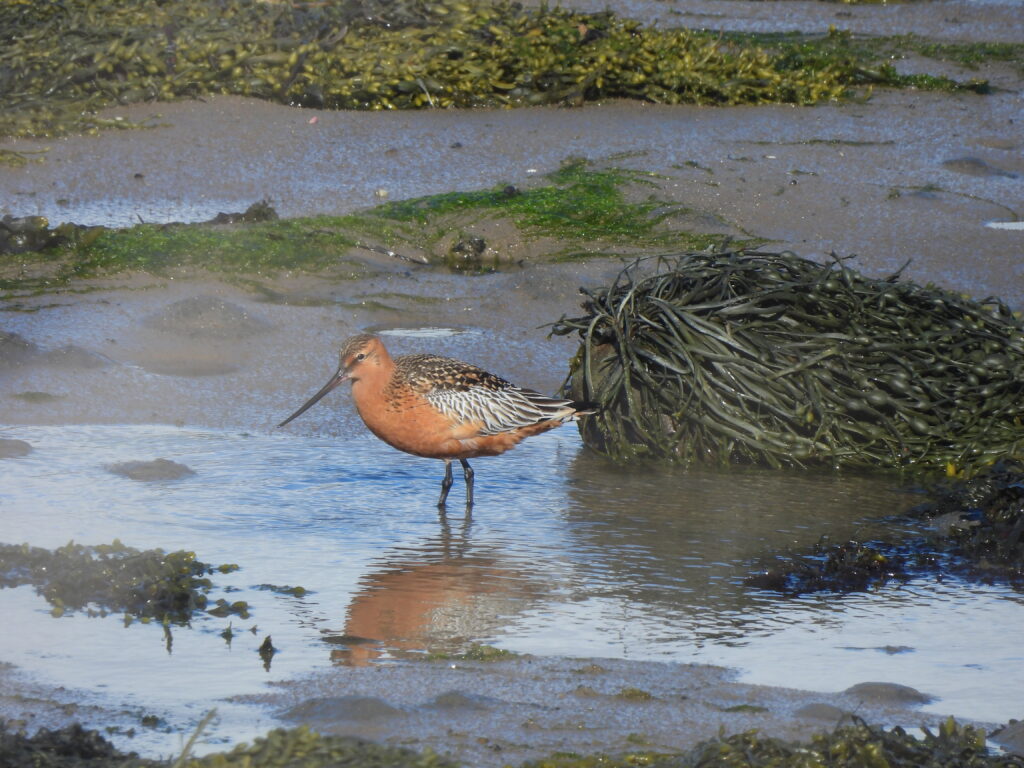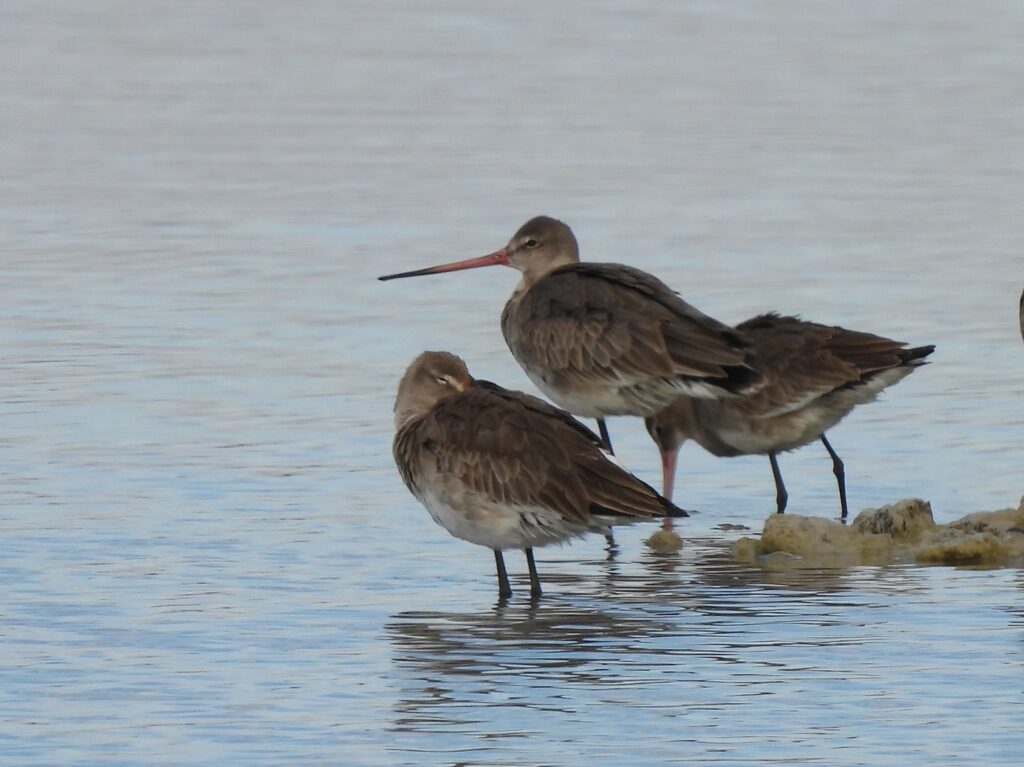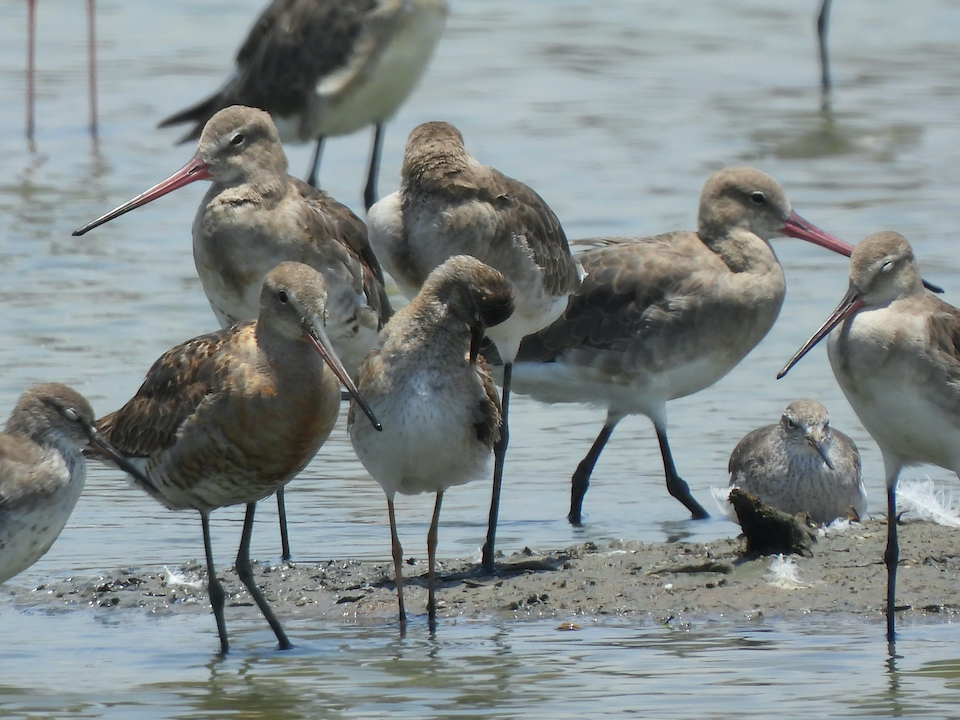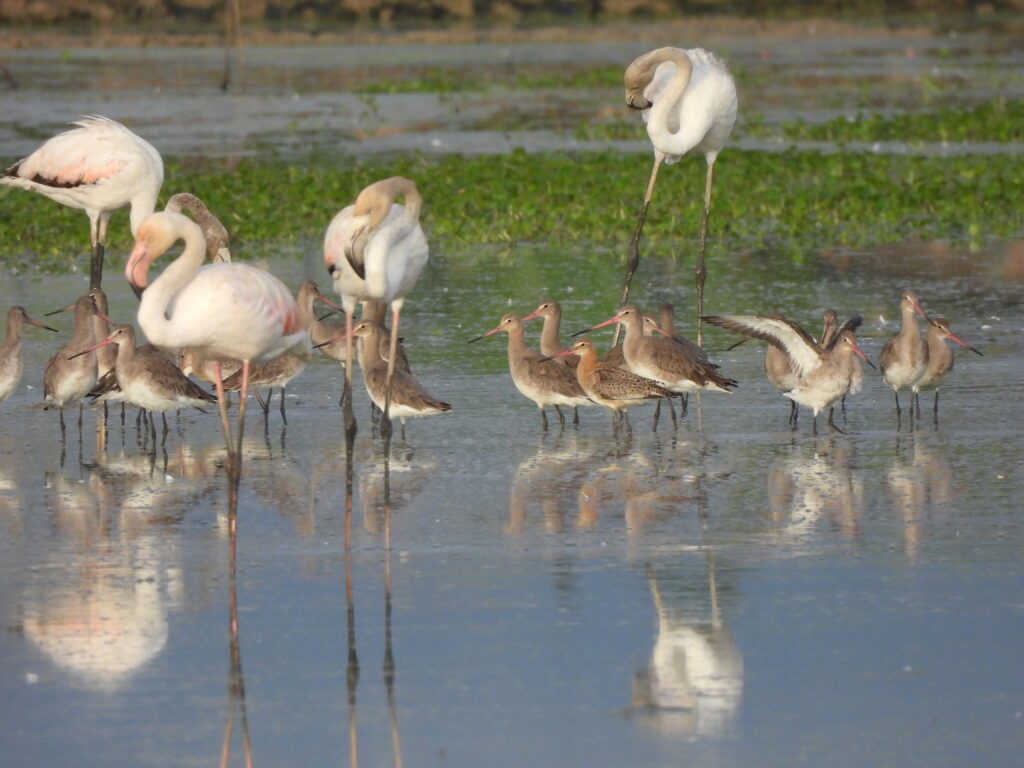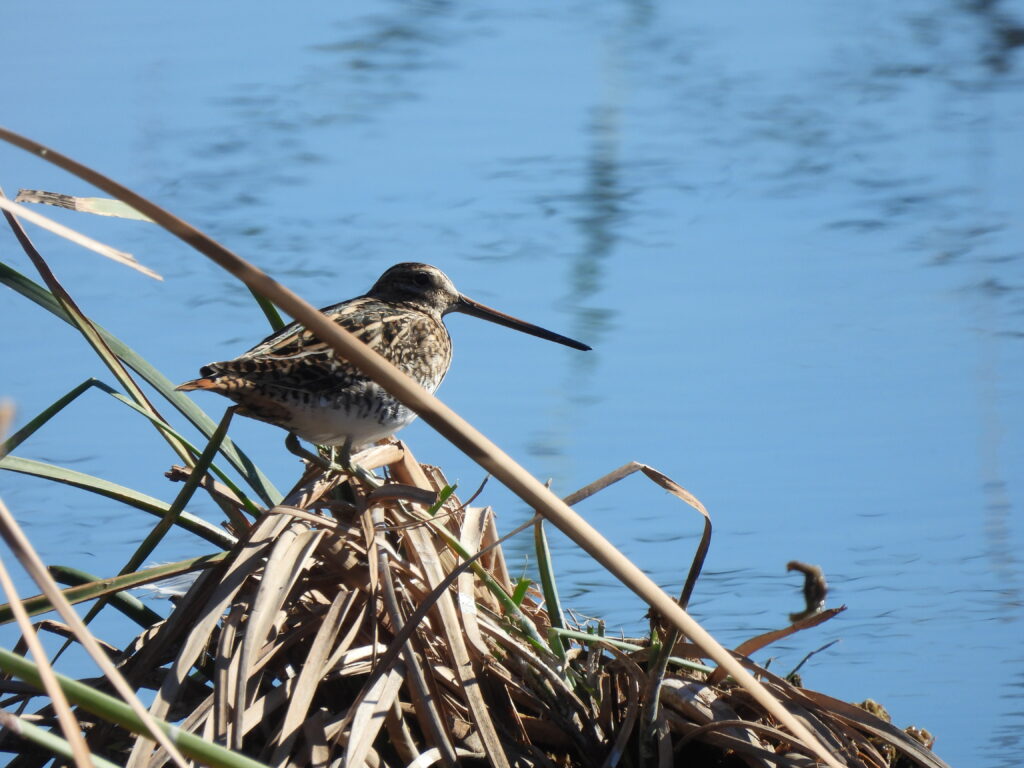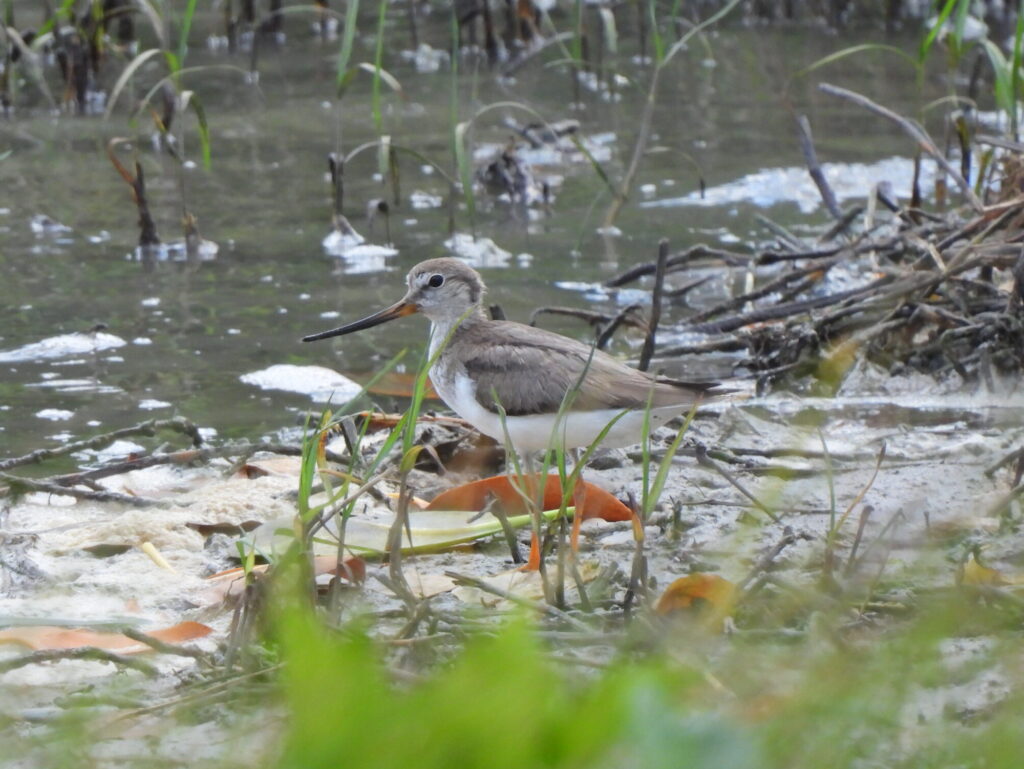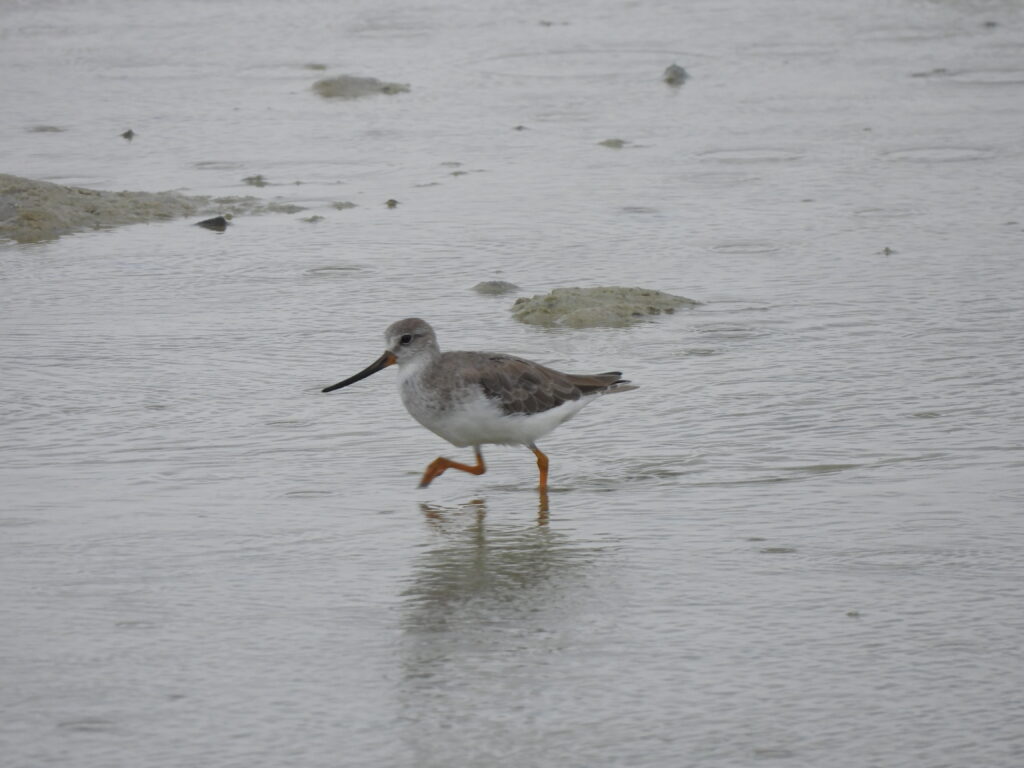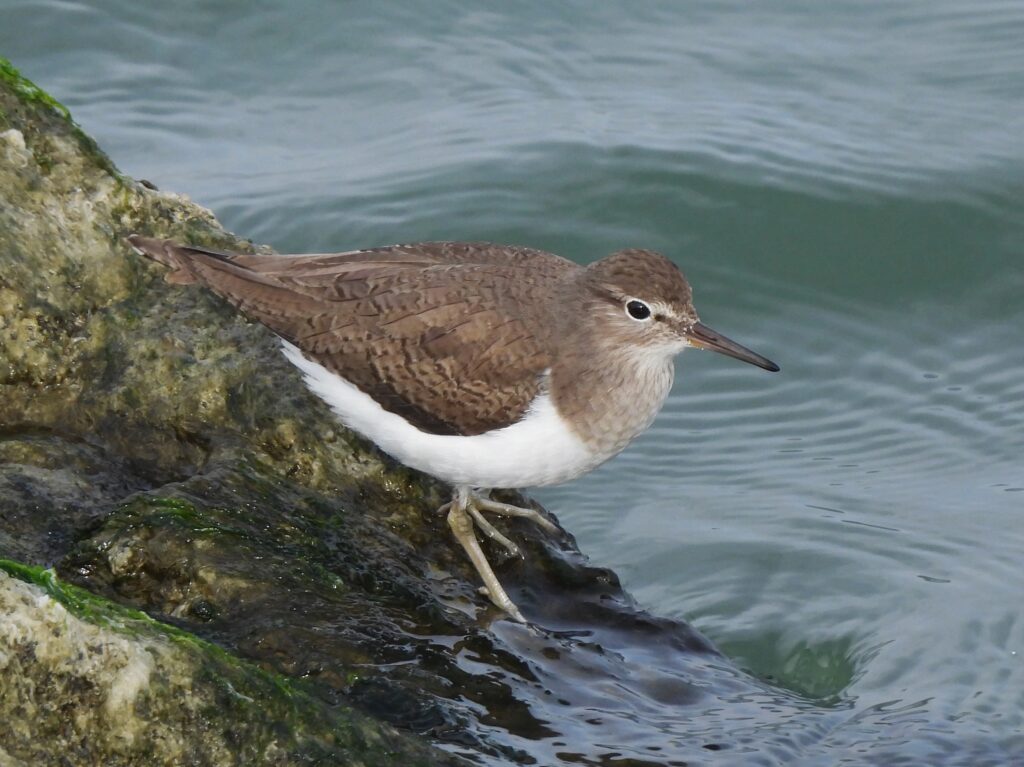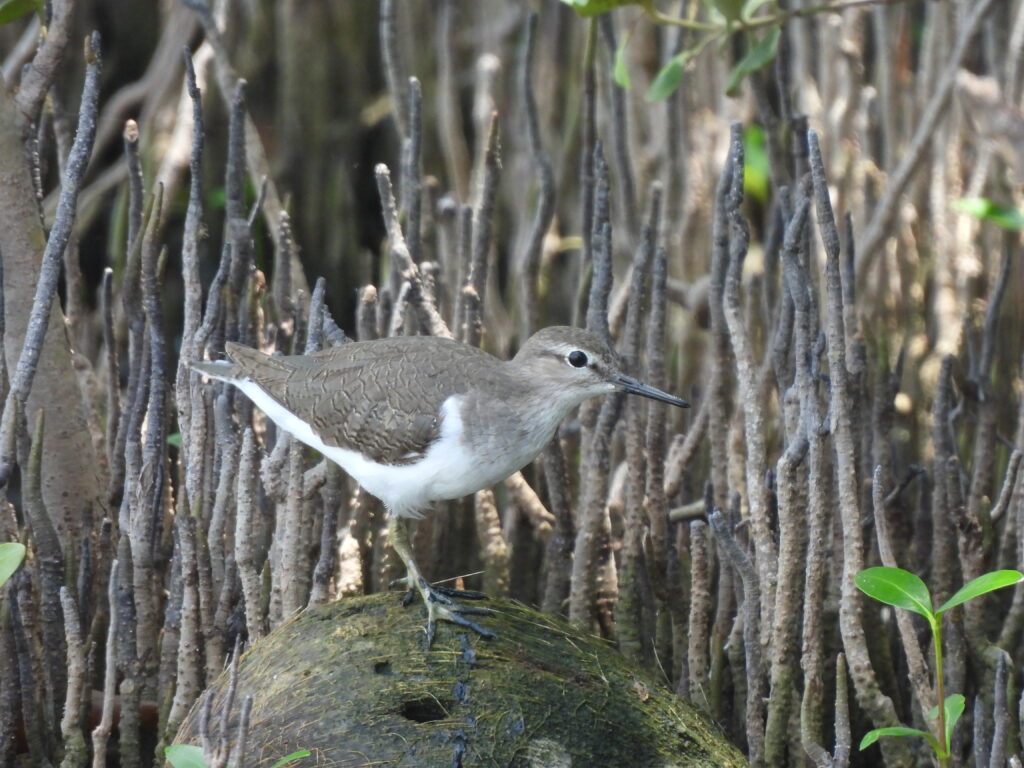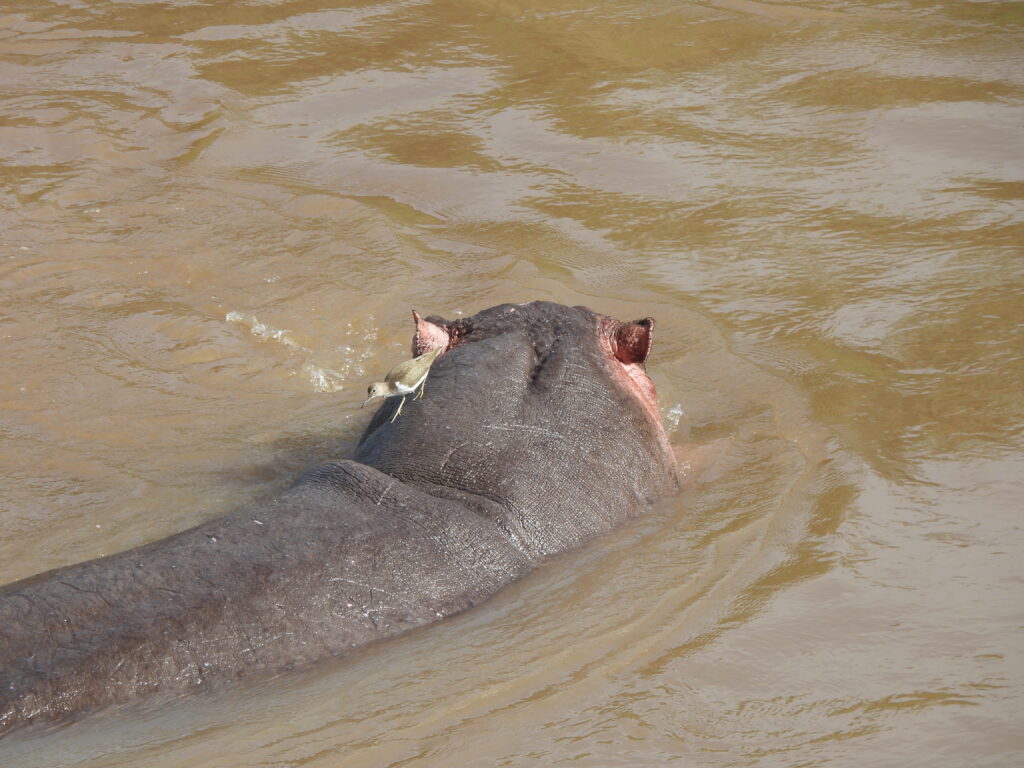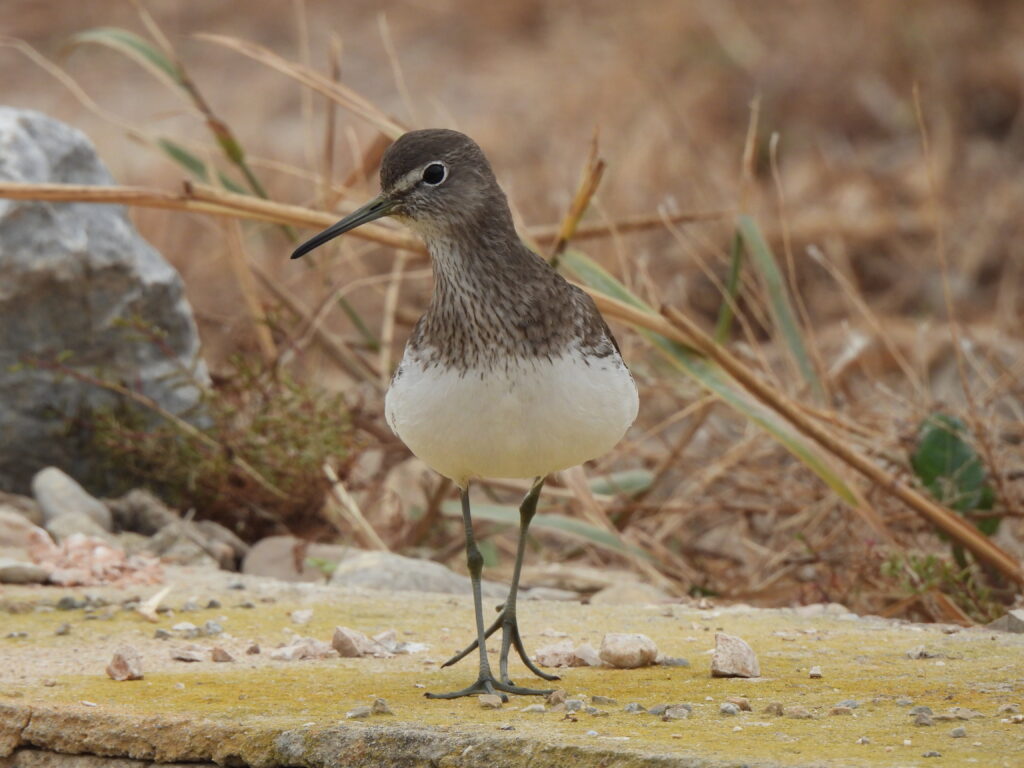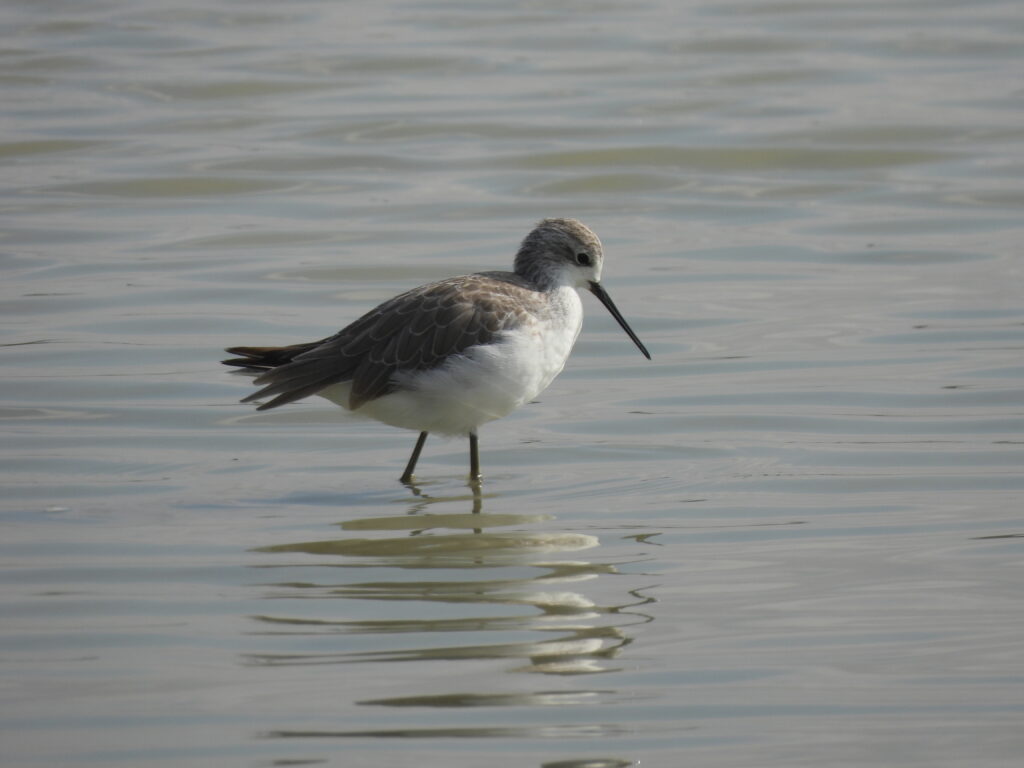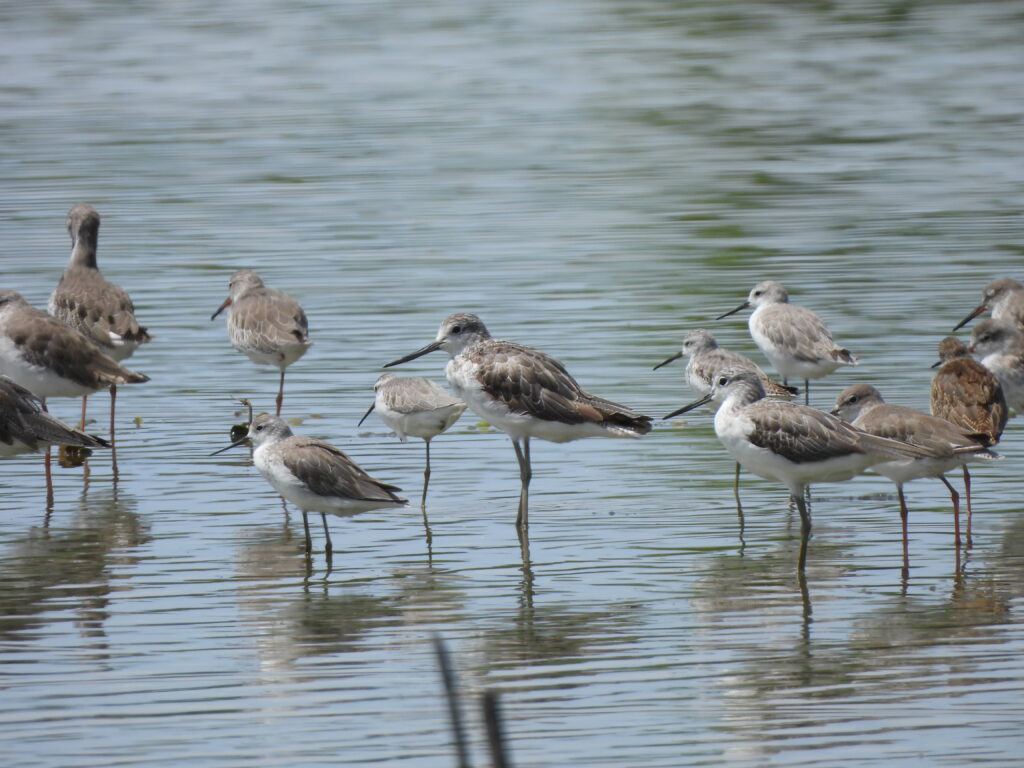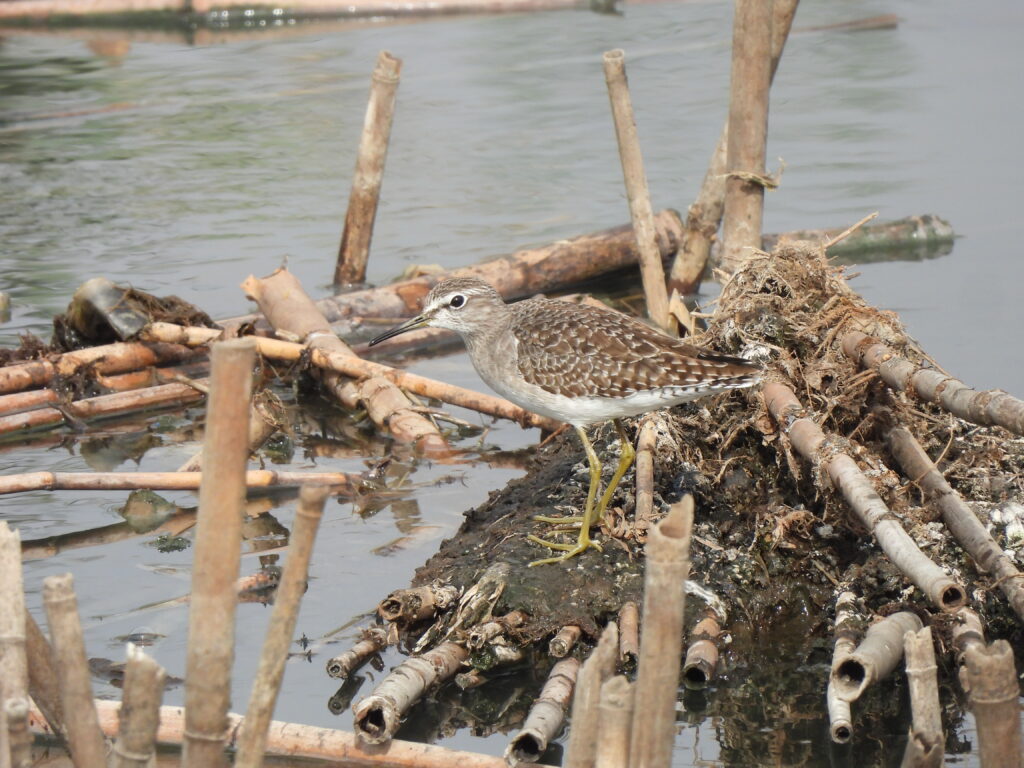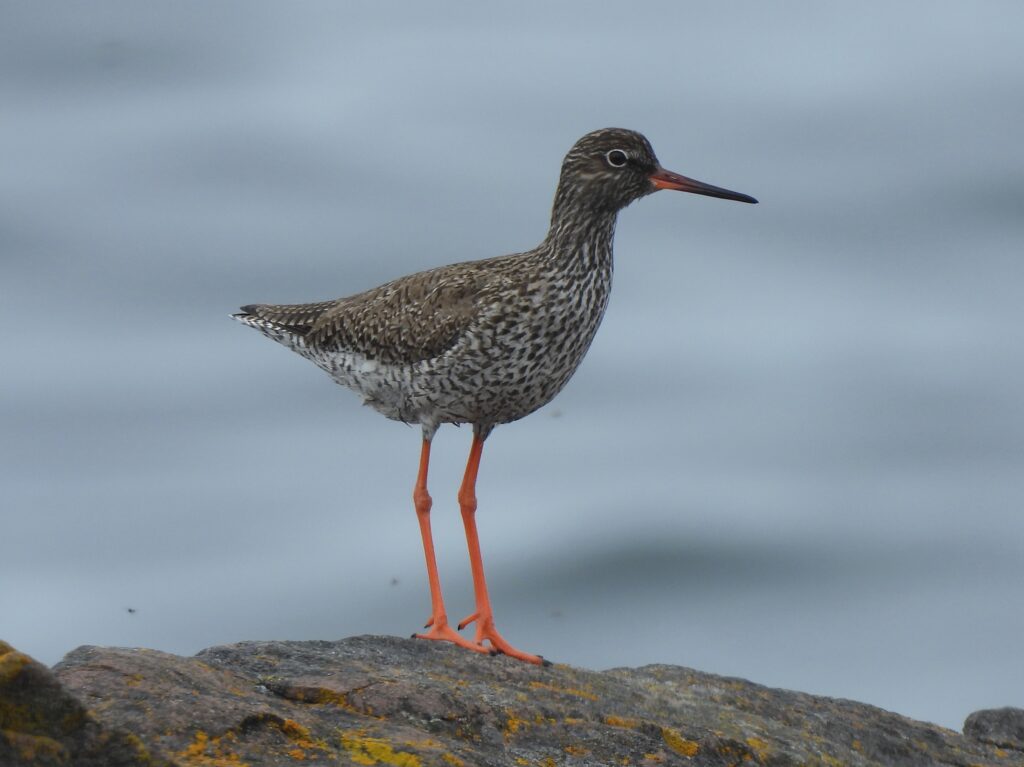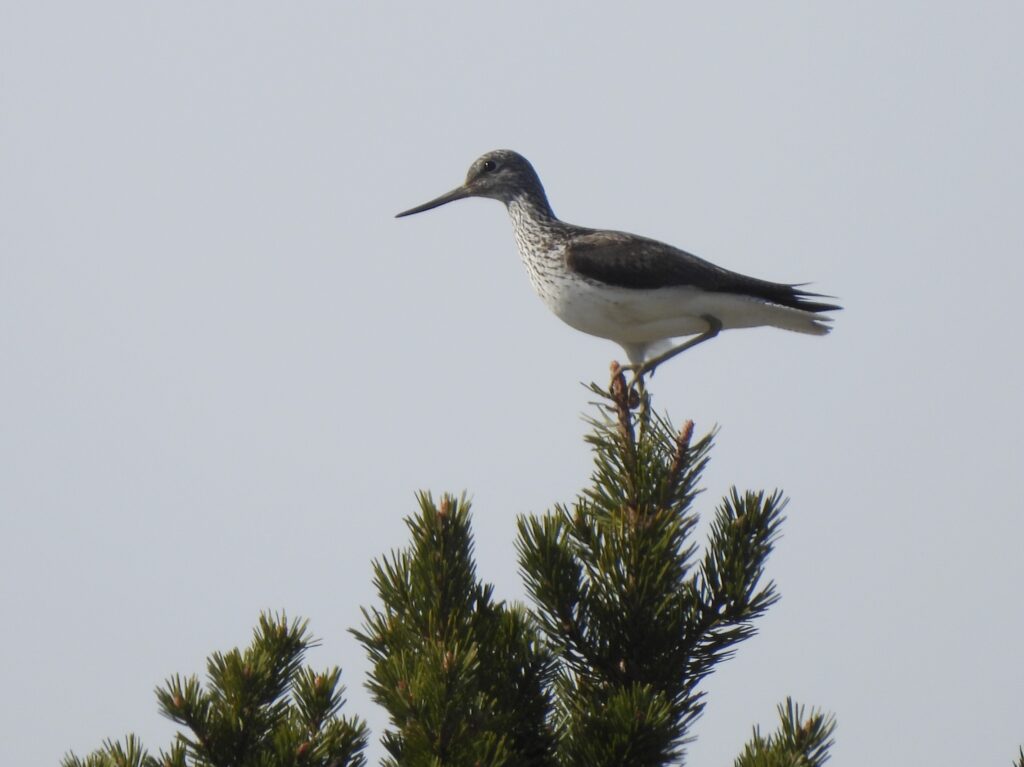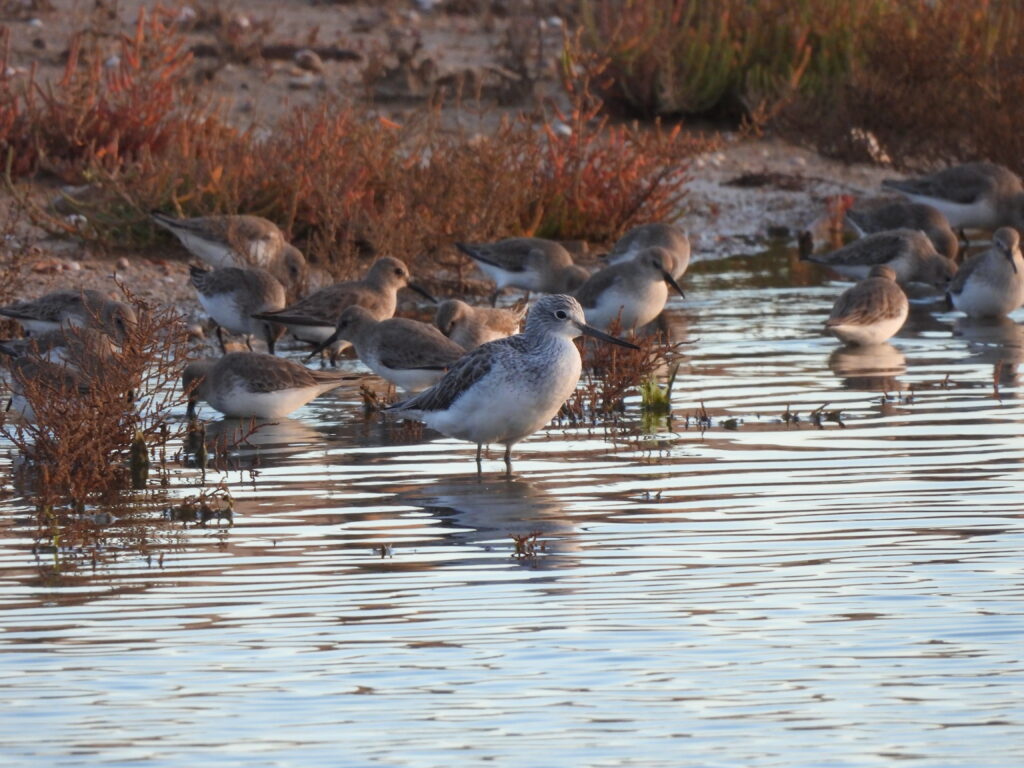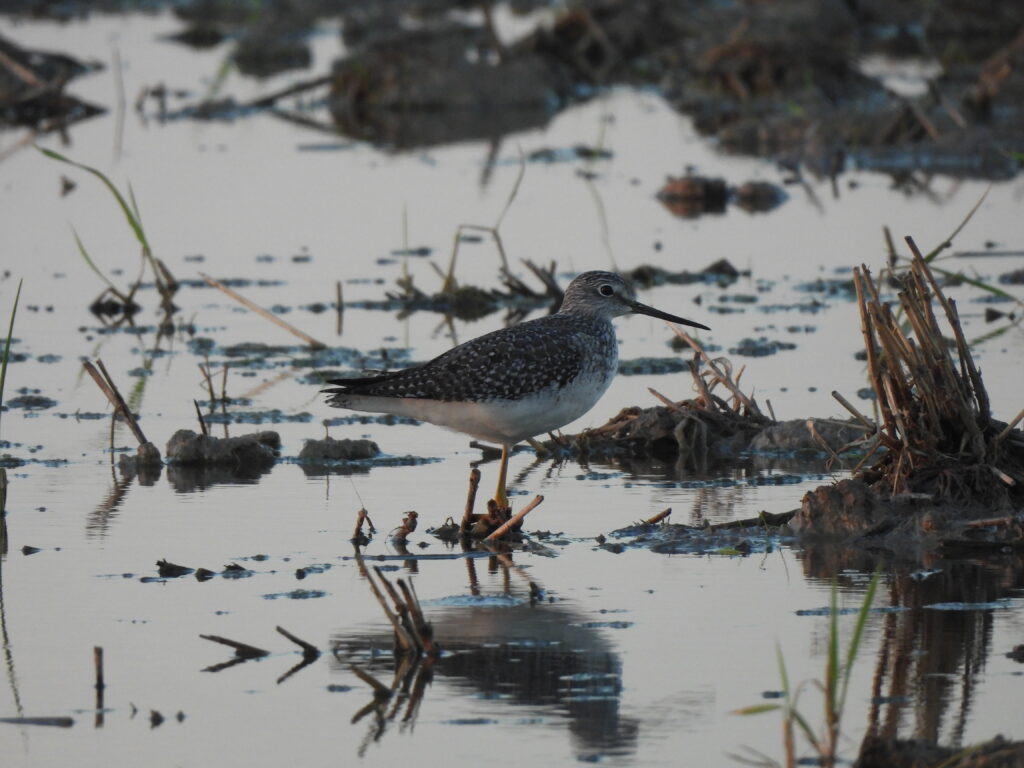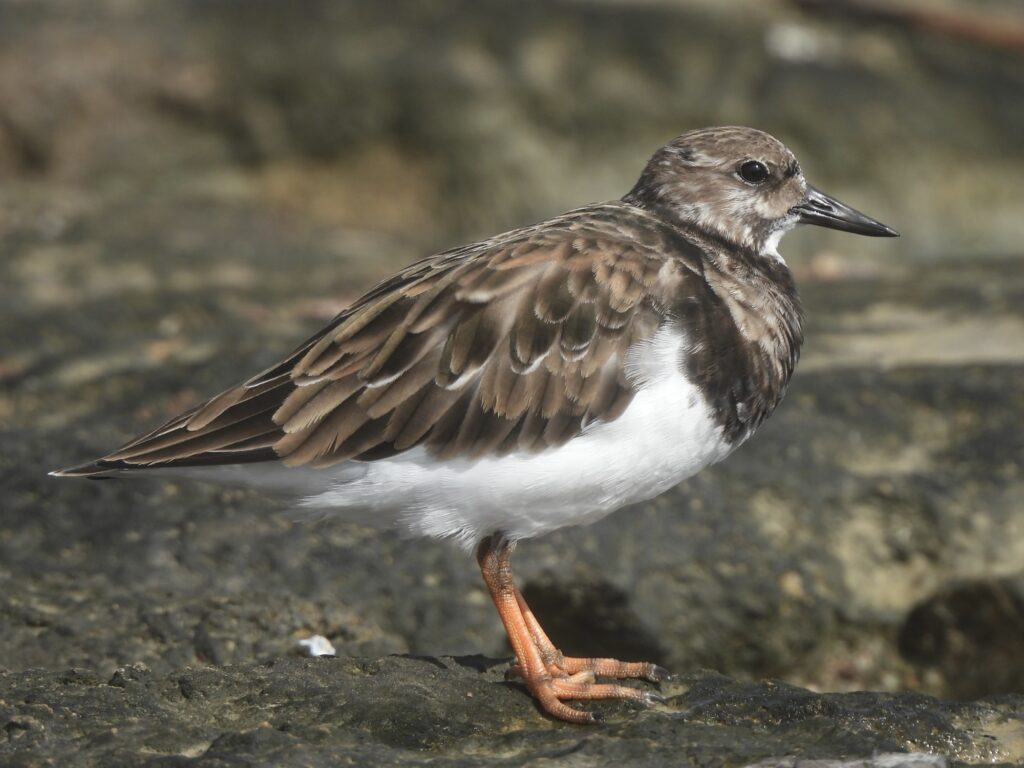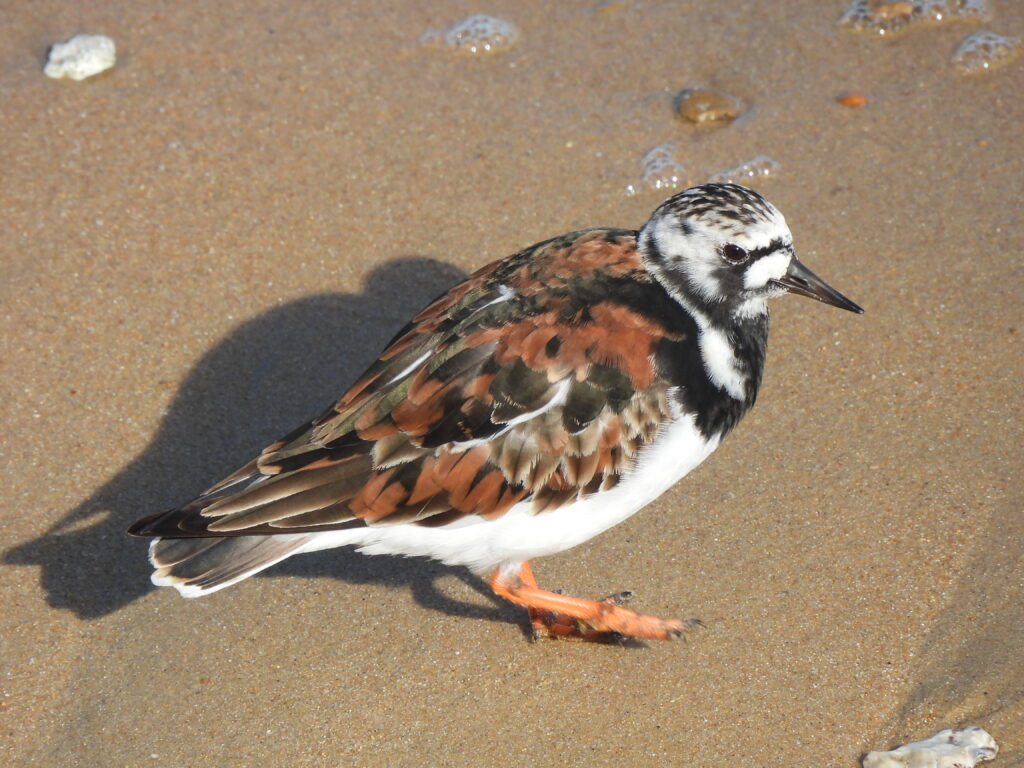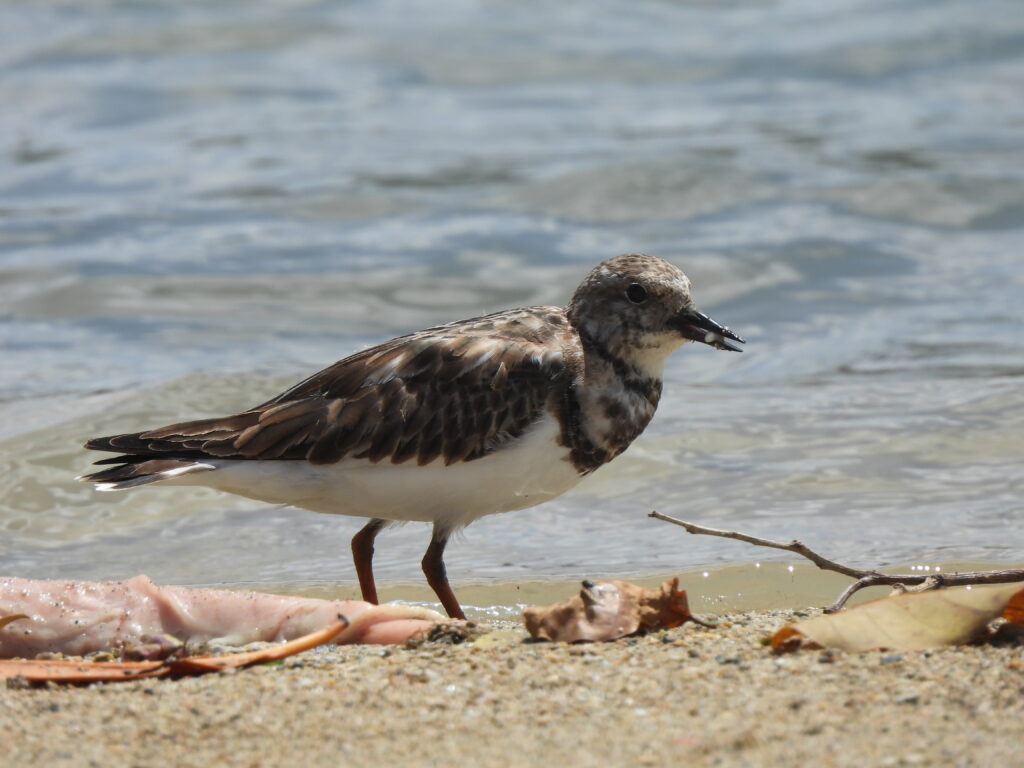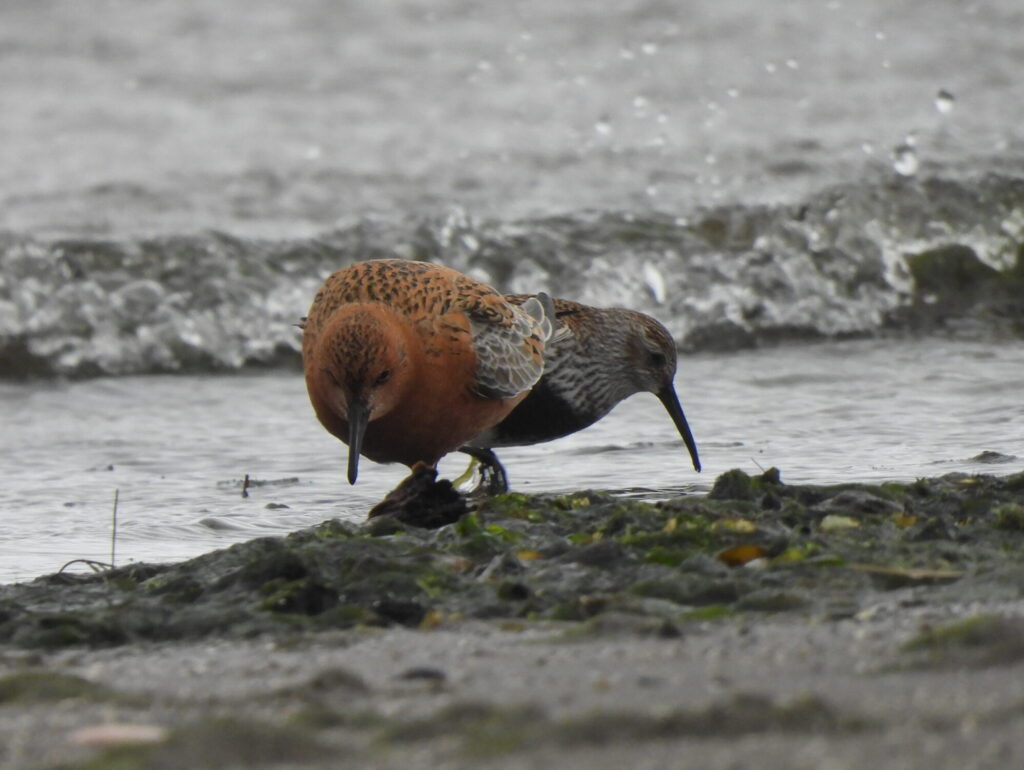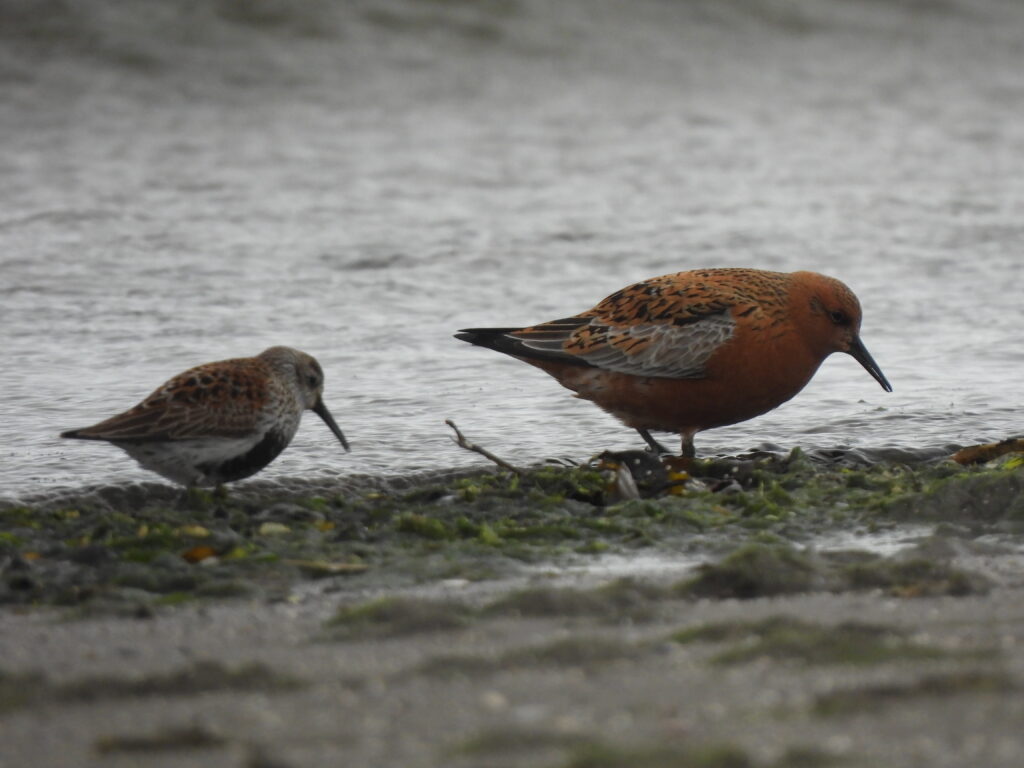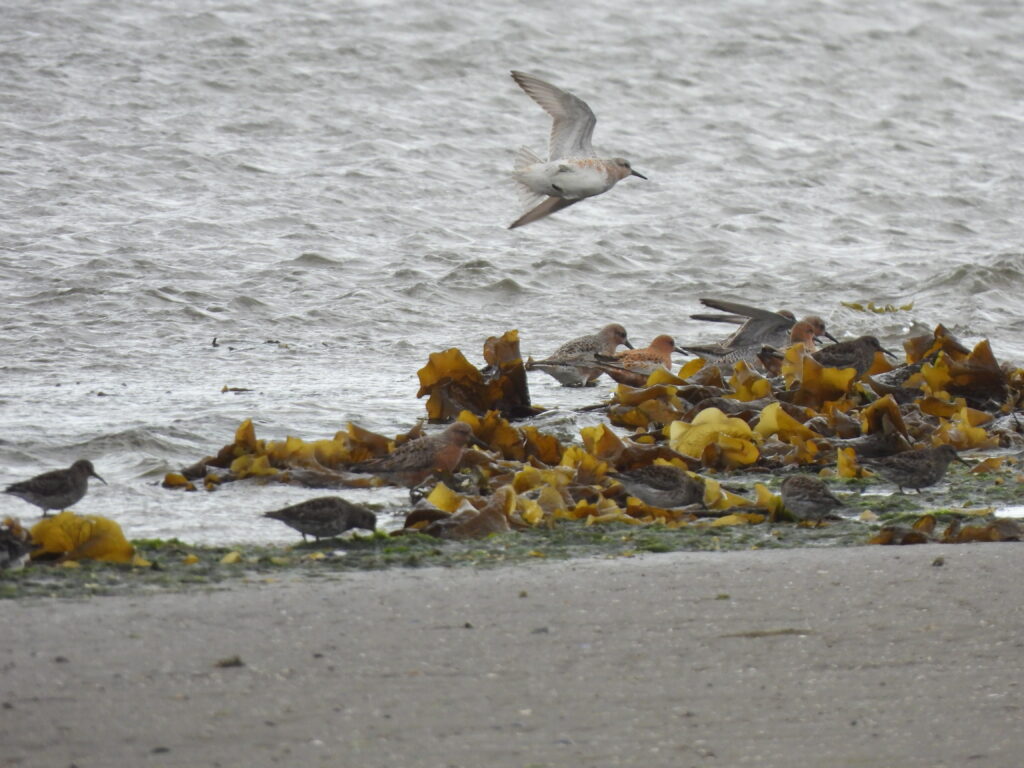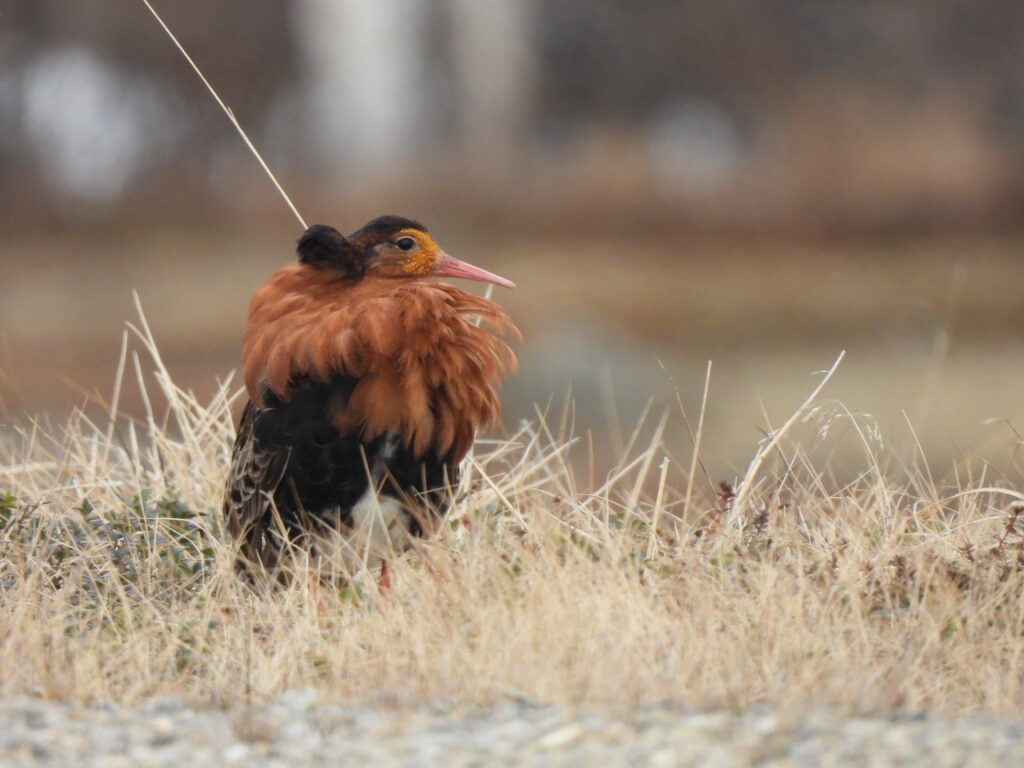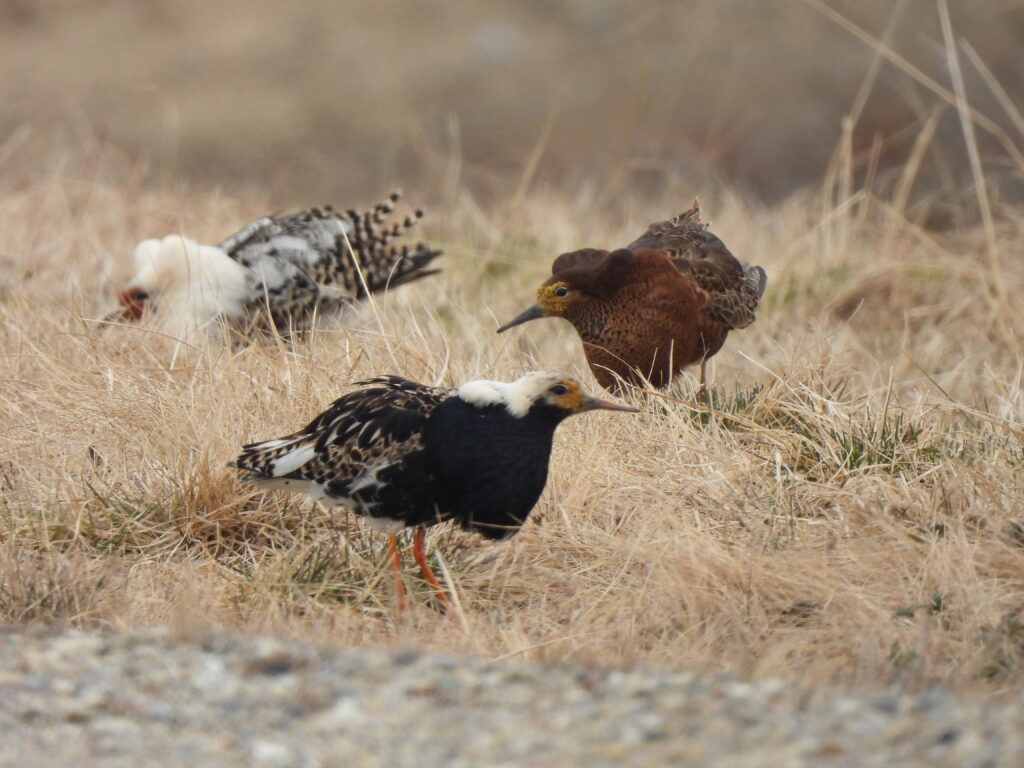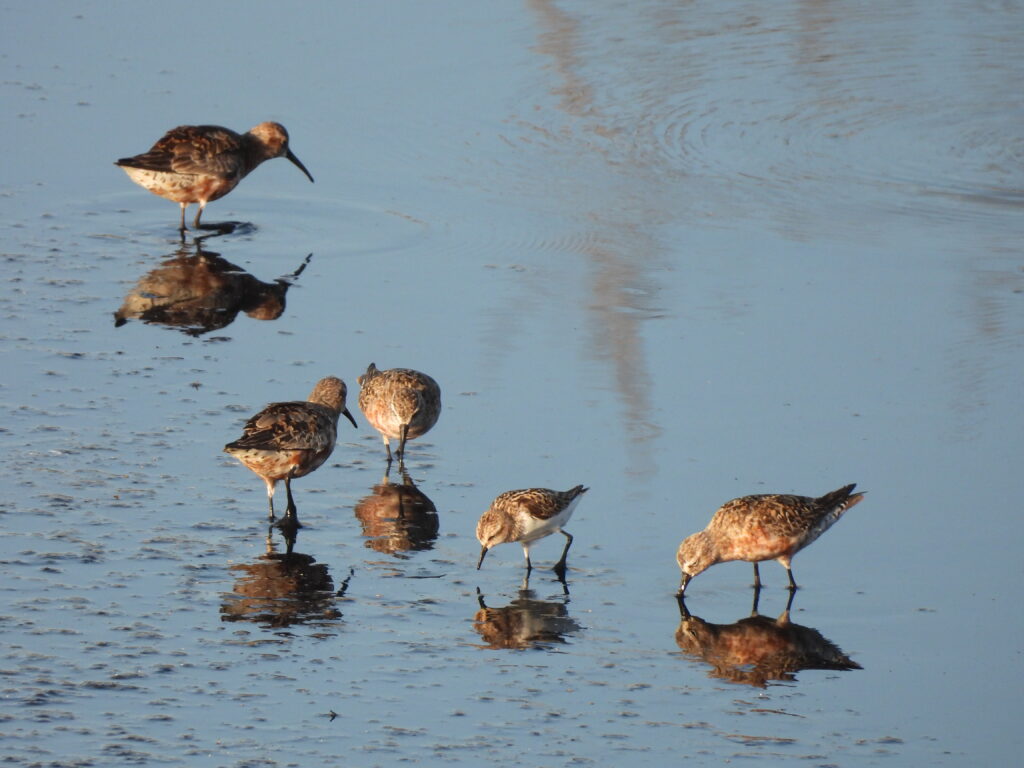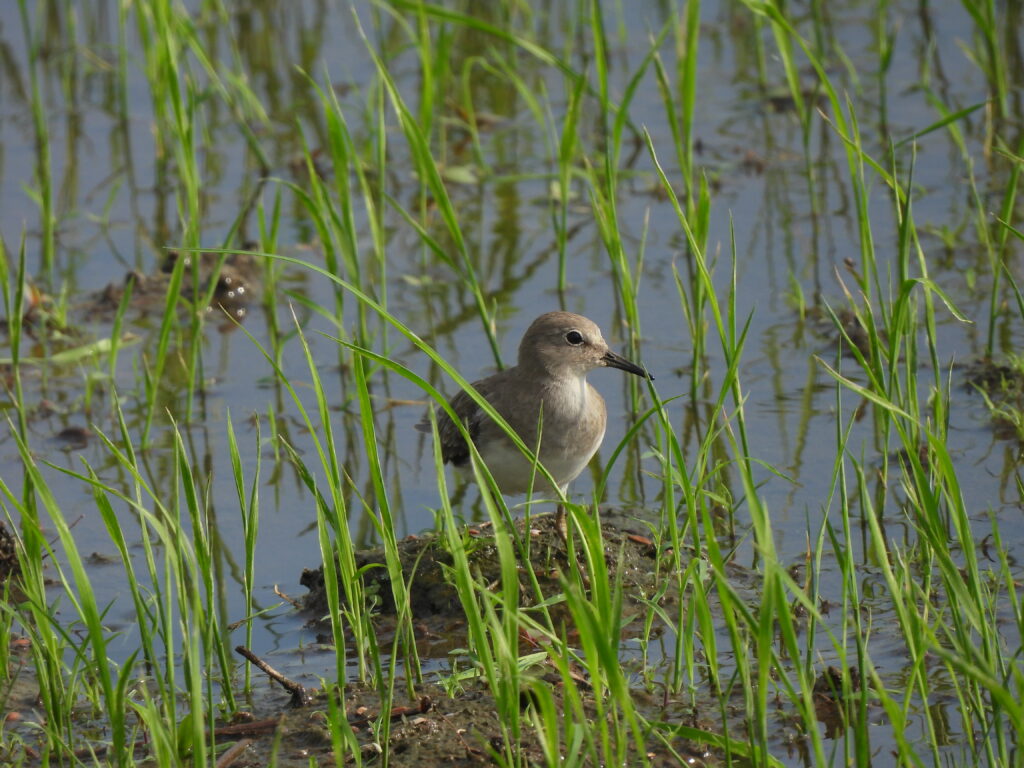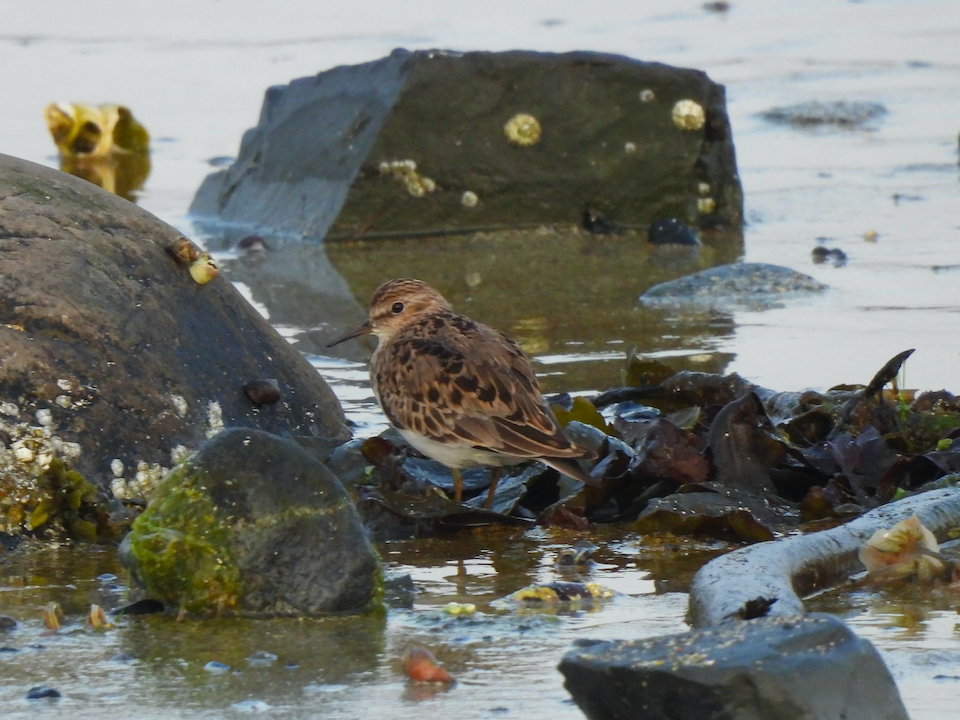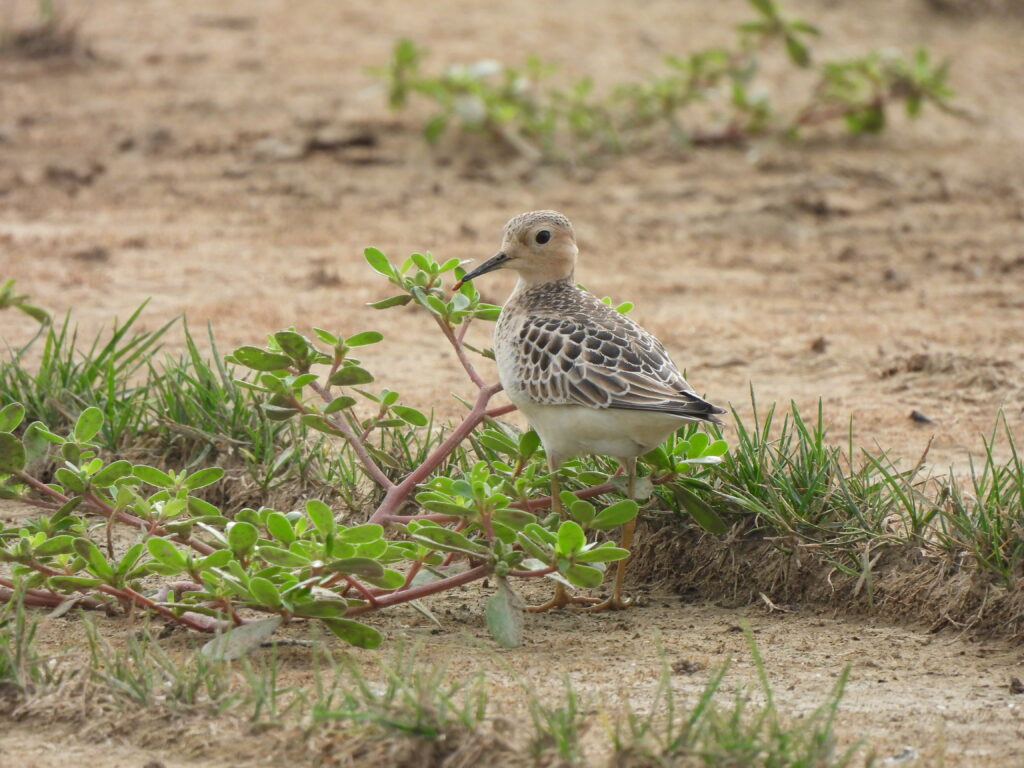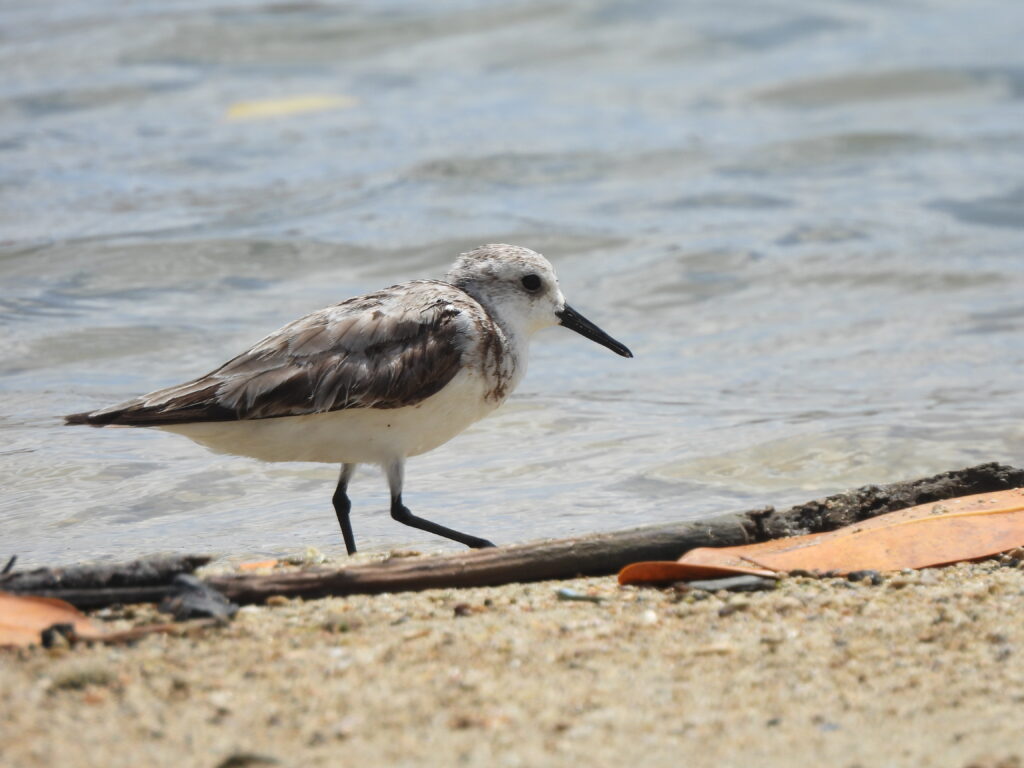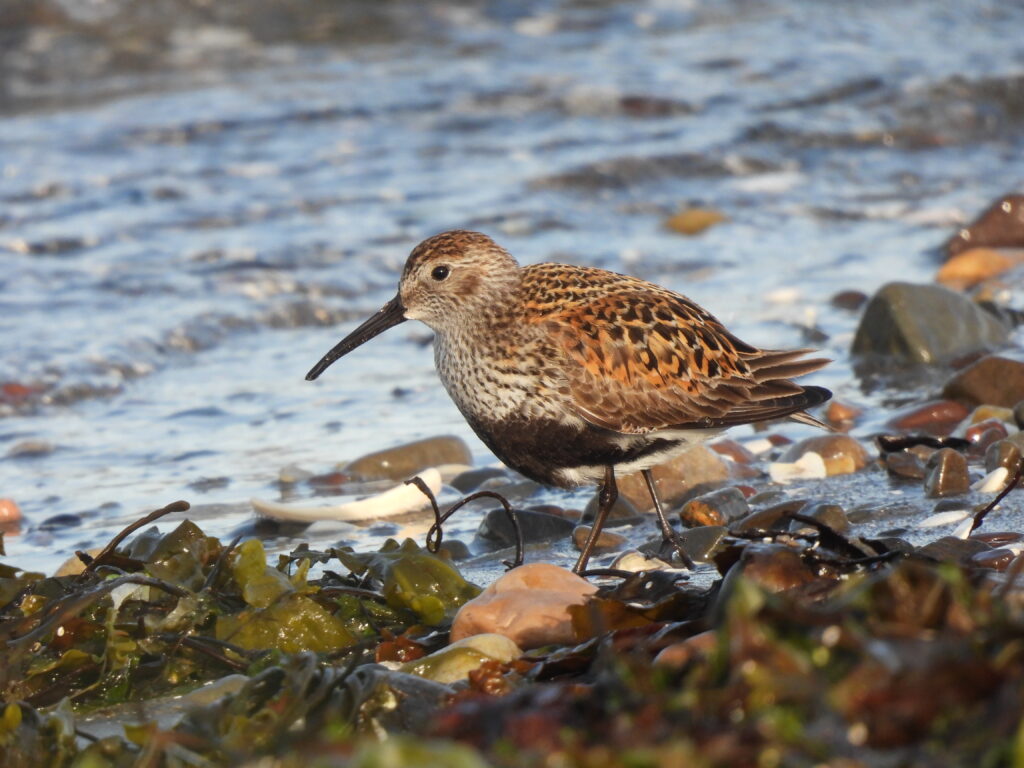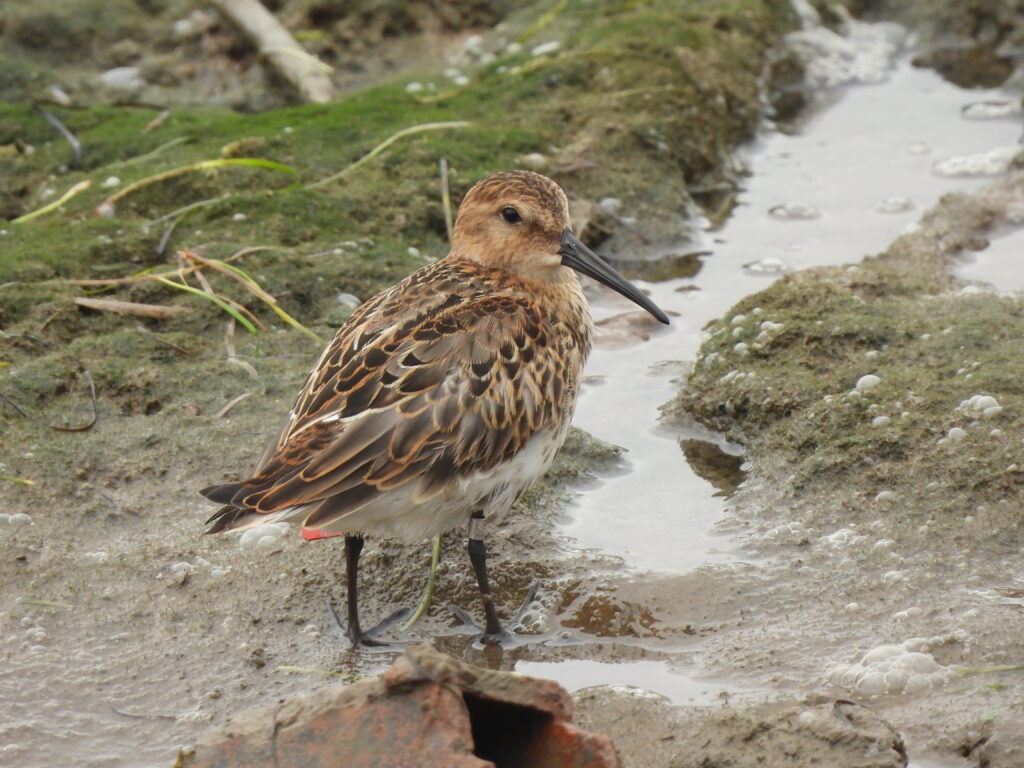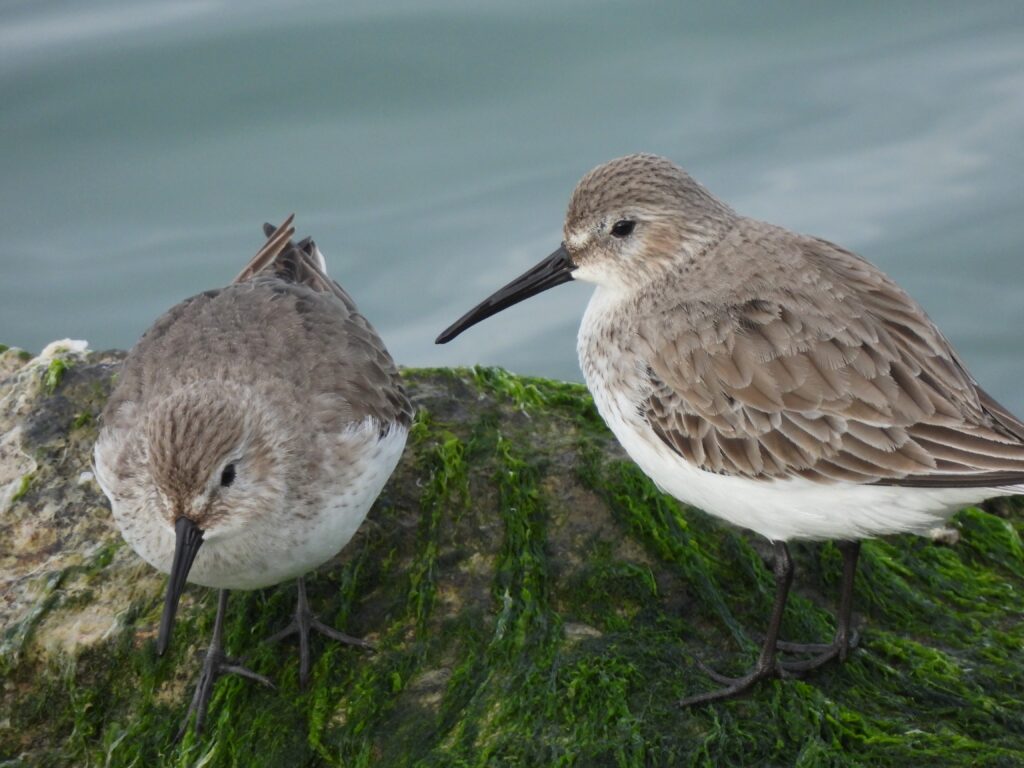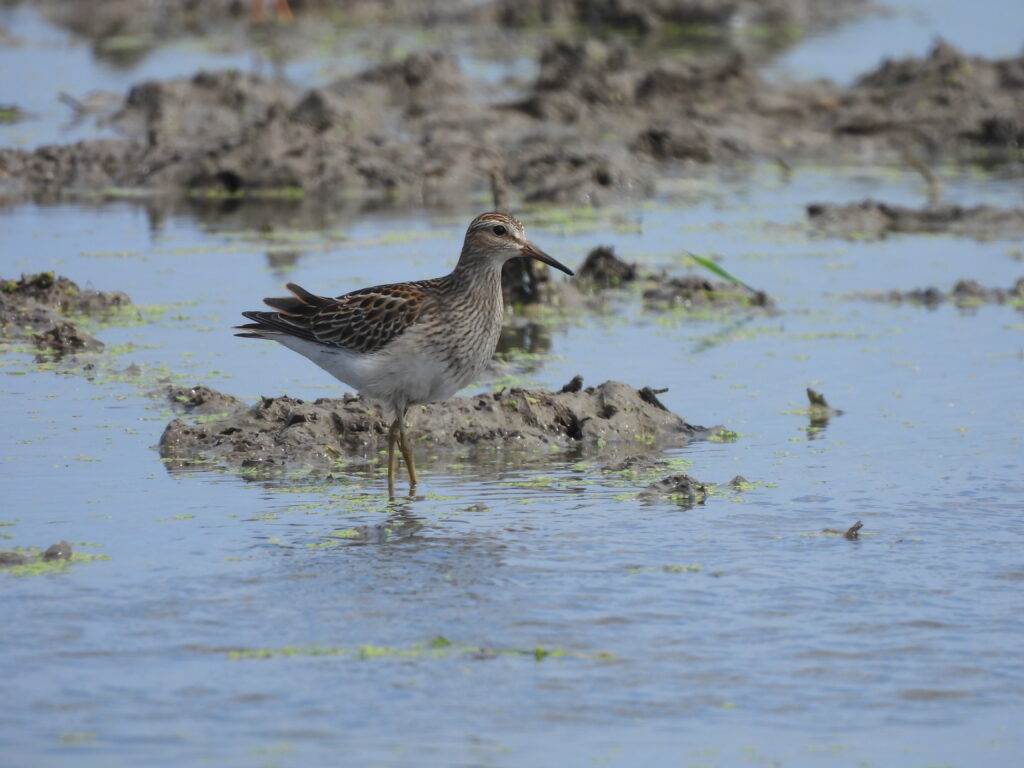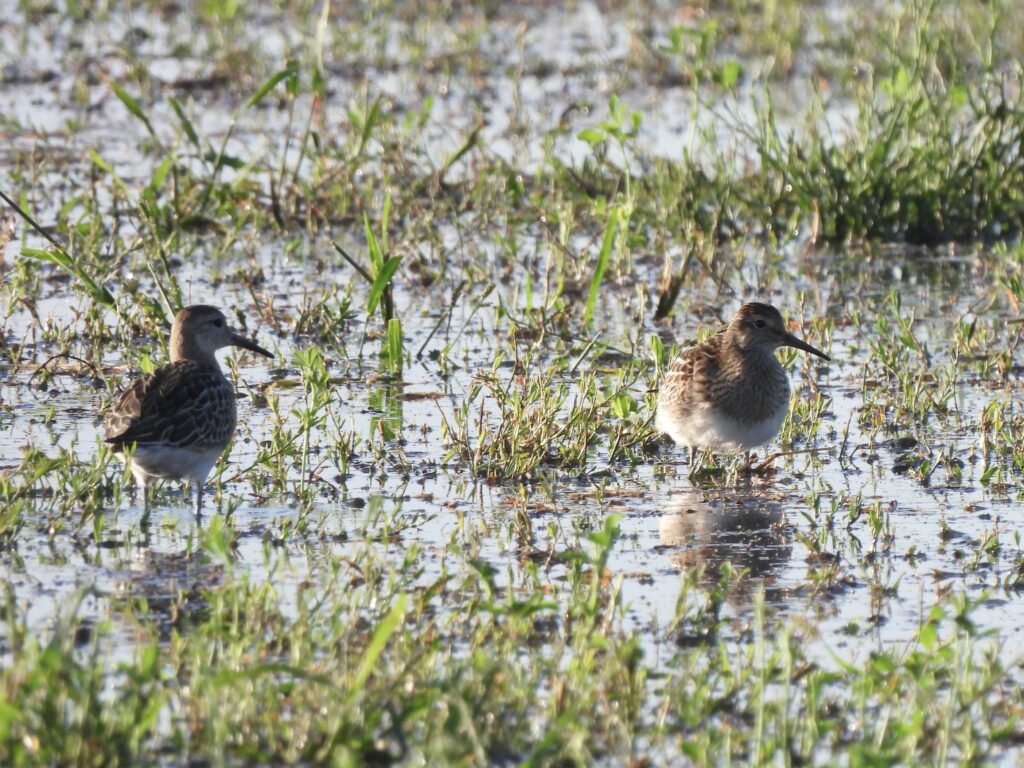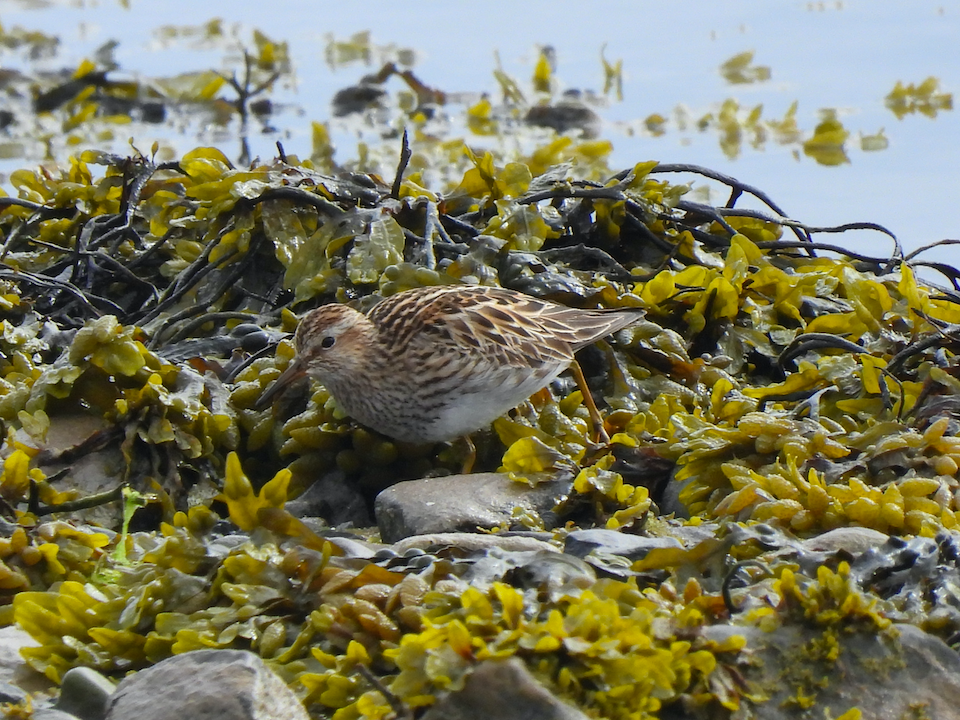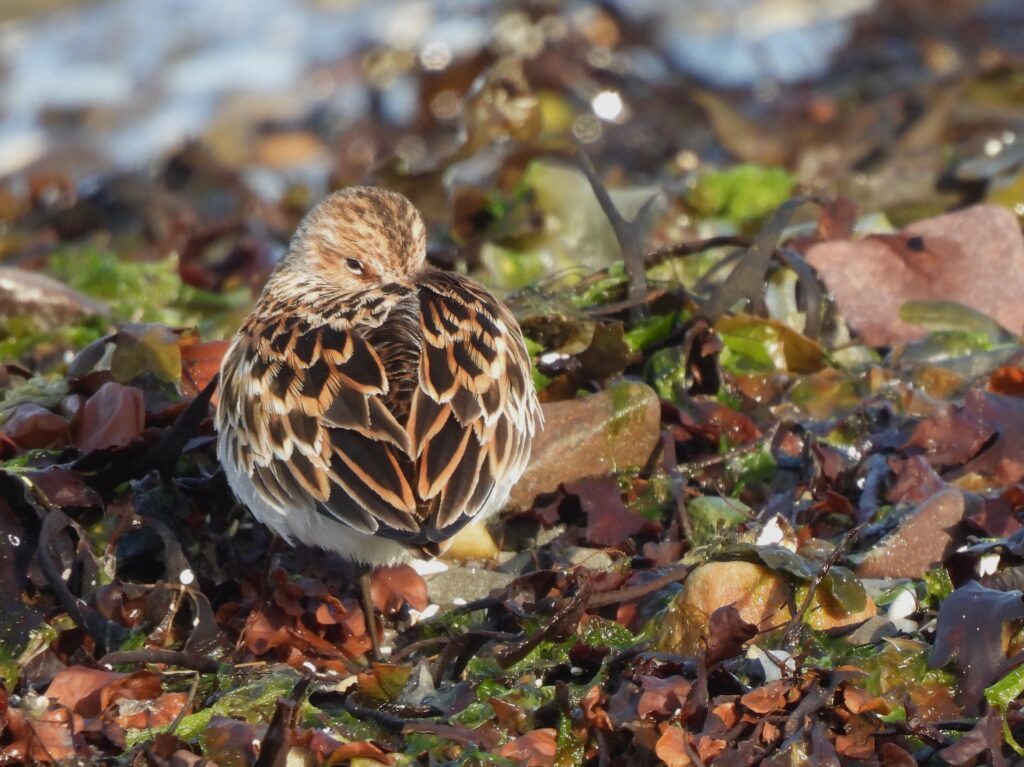The sandpipers and snipes (family Scolopacidae) are a large family of birds belonging to the order Charadriiformes, often regarded as shorebirds. This diverse family includes generally long-billed birds adapted to prob for invertebrates on moist soil and are mostly associated to water bodies. Most species are long-legged, including large-sized curlews and godwits, mid-sized dowitchers and shanks and small sandpipers, phalaropes and stints. Some taxa have shorter legs, chunky bodies and some are even found far from water, including snipes and woodcocks. Most species perform aerial displays during courtship and have the ability to move the tip of their long, sensitive bill, a movement known as rhynchokinesis.
The family comprises 98 species belonging to 14 genera. Basal genus Bartramia (1 species) is restricted to the New World. Genus Numenius (9 species of which 2 likely extinct) includes curlews, genus Limosa (4 species) includes godwits and genus Limnodromus (3 species) includes dowitchers. Birds commonly known as snipes belong to genera Lymnocryptes (1 species), Coenocorypha (5 species of which 2 extinct) and Gallinago (18 species), and are closely related to the woodcocks of genus Scolopax (8 species). Genera Xenus (1 species) and Actitis (2 species) are known as sandpipers, while birds of genus Phalaropus (3 species) are phalaropes. The genus Tringa (13 species) comprises a variety of sandpipers often known as shanks. Genus Prosobonia (4 species of which 3 extinct) is restricted to remote islands of Oceania. Birds of genus Arenaria (2 species) are usually known as turnstones. The large genus Calidris (24 species) includes a variety of sandpipers with different names, including knots and stints.
Eurasian whimbrel
Numenius phaeopus
Breeds in tundra and moorland of Greenland and Northern Europe to Siberia and migrates to coastal areas all across the Old World, Australia and New Zealand. Despite being widespread, populations of the species have been greatly impacted by hunting in migration areas and high disturbance levels in breeding grounds. This species is a passage visitor in the coasts and wetlands of Alicante. Besides, I have seen it in its breeding grounds around Lapland, and at wintering grounds in the coast of Mauritius, Reunion and Kenya.
Eurasian curlew
Numenius arquata
Old World wader breeding in marshes and moorland from Central Europe to Russian Far East, migratng south in winter to coasts, mudflats and river banks across Africa and South Asia to Indonesia. This species is an uncommon wintering visitor in some wetlands of Alicante. Besides, I have seen it around its breeding grounds in Lapland, and at wintering grounds in tidal flats in Kenya.
Bar-tailed godwit
Limosa lapponica
Breeds in the tundra from Scandinavia to Alaska and migrates to coastal wetlands and mudflats of the Old World including Europe, Africa and South Asia to Australia and New Zealand. The population breeding in Alaska is renowned to performed the longest non-stop flight of the animal kingdom, flying non-stop for 8 days over the Pacific Ocean to New Zealand. This is an uncommon passage visitor in wetlands of Alicante. I have observed the species around breeding grounds in Lapland, and in wintering areas in the coast of Kenya.
Black-tailed godwit
Limosa limosa
Old World godwit that breeds in marshes of Central Europe to Russian Far East and migrates to inland wetlands of Southern Europe, Africa, South Asia and Australia. Flocks of the species regularly sediment during migration period and winter in the wetlands of Alicante, mostly of the nominate European limosa form and rarely including individuals of the Icelandic islandica form.
Jack snipe
Lymnocryptes minimus
Breeds in bogs and wet meadows of far Northern Europe and Siberia, and migrates in winter to wet areas with low vegetation in Europe, South Asia and Subsaharan Africa. Diminutive cryptic wader which is the smallest snipe and has the habit to remain still and camouflaged when disturbed, even when the disturbance takes place at few meters of distance. This species is an uncommon winter visitor in Alicante.
Common snipe
Gallinago gallinago
Old World snipe breeding in marshes across Siberia and Europe as far south as Northern Spain, migrating to lower latitudes in winter south to Africa and Southeast Asia. Males perform nuptial flights and the wings make a drumming sound akin to that of a sheep or goat. This species is abundant in wetlands during winter in Alicante. The wetlands of Helsinki bear good numbers in summer.
Pin-tailed snipe
Gallinago stenura
Eastern Palearctic snipe breeding in tundra and damp marshes of Northern Russia and migrates south to a wide variety of moist habitats in the Indian Subcontinent and Southeast Asia during the non-breeding months. The so-called pin-tail comes from the outer tail feathers, which contribute to males drumming sound. I have seen this species in non-breeding grounds in India.
Terek sandpiper
Xenus cinereus
Breeds in water bodies in the taiga all across Russia and only marginally reaching far Eastern Europe, migrating during the non-breeding period to coastal areas across Southern and Eastern Africa through South Asia to Australia. Belongs to a monotypic genus and is unique among sandpipers by having a long upcurved bill I have seen this species in the coast of Mauritius and Kenya.
Common sandpiper
Actitis hypoleucos
Small wader of wetlands, marshes and river banks of the Old World, breeding across Europe and Asia east to Japan and wintering south to Southern Africa and Australia. It distinctly wags its tail. This species is relatively abundant in Alicante. In Helsinki, the species is a summer visitor.
Red-necked phalarope
Phalaropus lobatus
Breeds in high Arctic tundra and migrates to pelagic zones in the oceans at tropical latitudes. As other phalaropes, this species has webbed toes and inverted sex roles, with females showing a dominant behavior and more colorful plumage. I have seen this species on its breeding grounds in Lapland.
Green sandpiper
Tringa ochropus
Breeds in temperate and boreal forests in Europe and Asia and migrates to a range of freshwater habitats across the Old World. Interestingly, it often uses empty nests of other species, especially thrushes, on trees. This species is a regular passage and winter visitor in Alicante, and a summer visitor in Helsinki.
Marsh sandpiper
Tringa stagnatilis
Breeds in temperate marshes from far Eastern Europe to Northeast China, and spends the non-breeding period in swamps and other inland wetlands across Africa, the Arabian Peninsula, South Asia and Australia. This is a local, uncommon but regular passage visitor in wetlands of Alicante. I have observed good numbers of this species wintering in India, Kuwait, Qatar and Thailand.
Wood sandpiper
Tringa glareola
Breeds in cool temperate taiga forests of Northern Europe and Asia, often using empty nests of thrushes. Migrates south to freshwater habitats Africa, South Asia and Australia in the non-breeding period. It is quite numerous during passage in wetlands and flooded fields in Alicante. It is one of the most abundant waders in Helsinki wetlands during summer. I have also seen good numbers on wintering grounds in India, Qatar, Kenya and Thailand.
Common redshank
Tringa totanus
Inhabitant of marshes, saltpans and freshwater habitats of the Old World, breeding in temperate regions and migrating to tropical latitudes during the non-breeding period. It is a regular visitor in Alicante during winter and migration periods, and a summer visitor in Helsinki area.
Spotted redshank
Tringa erythropus
High latitude shank breeding in the high Arctic tundra from north Scandinavia to Siberia, migrating to subtropical and tropical latitudes during boreal winter. Breeding plumage is mostly black, while winter plumage looks light. This species is a regular passage visitor in Alicante, with some birds wintering. I have seen the species on its breeding grounds in Lapland.
Common greenshank
Tringa nebularia
Light-colored high latitude shank which breeds in boreal forests of the Old World and spends the winter months in wetlands and tidal flats of tropical areas south to Southern Africa, Australia and New Zealand. Unique among shanks by showing an upturned bill. This species visits wetlands in Alicante in good numbers mostly during migration periods and winter. I have encountered it on breeding sites in Lapland and wintering areas in India.
Greater yellowlegs
Tringa melanoleuca
New World shank breeding in the taiga of north Canada and wintering south from Southern USA to the south end of South America. Despite looking similar to the lesser yellowlegs, it is most closely related to high latitude shanks common greenshank and spotted redshank. This species is a rare vagrant in the Western Palearctic and even more in Spain, where I got to see the 9th recorded bird in Valencia.
Ruddy turnstone
Arenaria interpres
Strictly coastal wader, breeding in beaches at north latitudes and migrating to shorelines across the globe during non-breeding period. It is named after its distinctive habit of turning stones with its bill to feed on hiding mollusks. This species is a winter visitor in beaches and locally in saltpans in Alicante. I have also seen this species in beaches of Qatar and Mauritius.
Red knot
Calidris canutus
Breeds locally in several locations of the high Arctic of Canada, Greenland and Siberia, with different forms local to each site, which then winter in coastal areas of warmer latitudes in different parts of the globe. Some of these populations have one of the largest bird migration routes, just over 14,000 km. This species is an uncommon passage visitor in Alicante. I have seen good numbers of birds in migration in Lapland.
Ruff
Calidris pugnax
Unique Old World wader breeding in bogs in boreal areas and wintering in flocks in varied freshwater habitats south to Southern Africa and Asia. Males of these species develop stunning large ruffs of different colors that determines their hierarchy level during the breeding period, when they fight for females. This species is regular in passage in Alicante. I have observed leks of males displying and fighting in Finnish and Norwegian Lapland.
Broad-billed sandpiper
Calidris falcinellus
Breeds locally in bogs in the Old World taiga and winters in coastal areas of the Persian Gulf, Indian Subcontinent, Southeast Asia, Philippines and Australia, often in large flocks including other species. Males of this threatened species perform aerial displays in breeding grounds. This species shows up in small numbers during passage in Helsinki.
Curlew sandpiper
Calidris ferruginea
Breeds in the tundra of far northeast Siberia and winters mostly in Africa, with some numbers spread across Southeast Asia to Australia. The global population of the species is vulnerable to extinction. The wetlands of Alicante are regular stopovers for flocks of the species during migration. I have observed this species wintering in Mauritius and Kenya.
Temminck’s stint
Calidris temminckii
Breeds in tundra from Scandinavia to Siberia and migrates to wetland habitats of equatorial latitudes of the Old World. The display flight at breeding sites is quite distinctive. This species is a localized passage and winter visitor in Alicante. I have seen numbers on breeding grounds in Lapland and wintering areas of India and Qatar.
Buff-breasted sandpiper
Calidris subruficollis
Long distance migrant from the New World, breeding in open arctic tundra of north Canada to short-grass habitats from Paraguay to northeast Argentina. Uncommon, local, scarce and globally vulnerable. Some numbers regularly turn up far from their range in the Western Palearctic and beyond. I have seen vagrant individuals in Valencia and Catalonia.
Sanderling
Calidris alba
Breeds in remote areas close to the North Pole, farther north than most of their relatives, and migrates to coastal mudflats and sandy beaches across the globe during non-breeding period. Large flocks of light-colored plumage birds escaping from waves at unison are a common sight at beaches during boreal winter worldwide. Good numbers reach sandy beaches and locally wetlands in Alicante during winter. I have also seen this species in Lapland and Mauritius.
Dunlin
Calidris alpina
Breeds in Arctic and Subarctic latitudes and migrates to warmer areas of the Northern Hemisphere. There are different forms, some long-distant migrants breeding at highest latitudes and others breeding at more temperate areas performing shorter migrations. Breeding plumage features a unique dark vent. This species is a passage and winter visitor to wetlands in Alicante. I have seen this bird at breeding sites in Lapland.
Purple sandpiper
Calidris maritima
Breeds in Arctic tundra and subarctic mountain tops from Canada to central Siberia and winters in temperate coasts of the Atlantic Ocean. It is a strictly marine species as well as its sister species, the rock sandpiper, with a similar niche but distributed along the north Pacific Ocean. I have observed this species in Lapland.
Pectoral sandpiper
Calidris melanotos
Breeds in bogs of the Arctic tundra of far Eastern Siberia, Alaska and west Canada and migrates through the Americas to winter in southern South America, with some wintering populations in Australia and New Zealand. Being very long distance migrants, good numbers are regularly seen in the Western Palearctic, where this species is likely the most numerous Nearctic wader. I have seen vagrant individuals in Alicante, Valencia and Catalonia during fall in Spain and in the Norwegian Lapland in spring.
Little stint
Calidris minuta
Diminutive Old World wader breeding in the Arctic from far north Scandinavia to central Siberia, migrating to a variety of wetland habitats mainly across Africa but reaching from Mediterranean Europe to the Indian Subcontinent. As with other Arctic breeding waders, their breeding success depend on the abundance of lemmings available for predators. Flocks of this species visits Alicante during passage and winter. I have observed this species in breeding grounds in Lapland and wintering in India, Kuwait, Qatar and Kenya.

